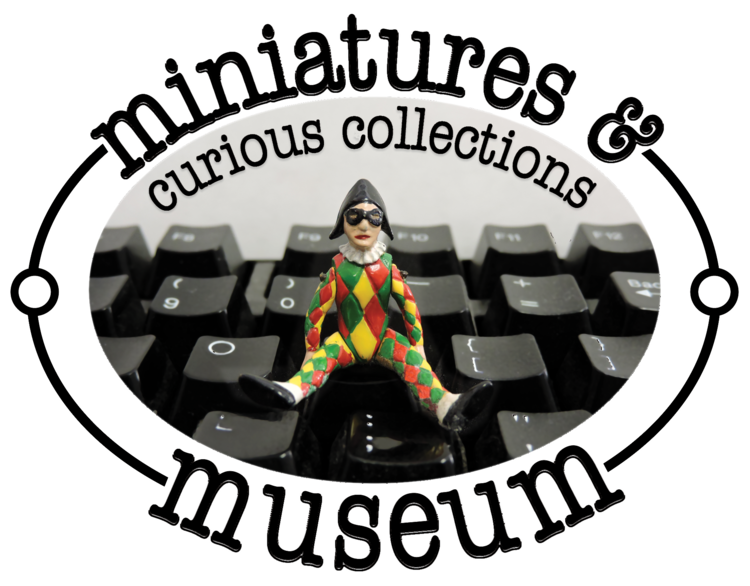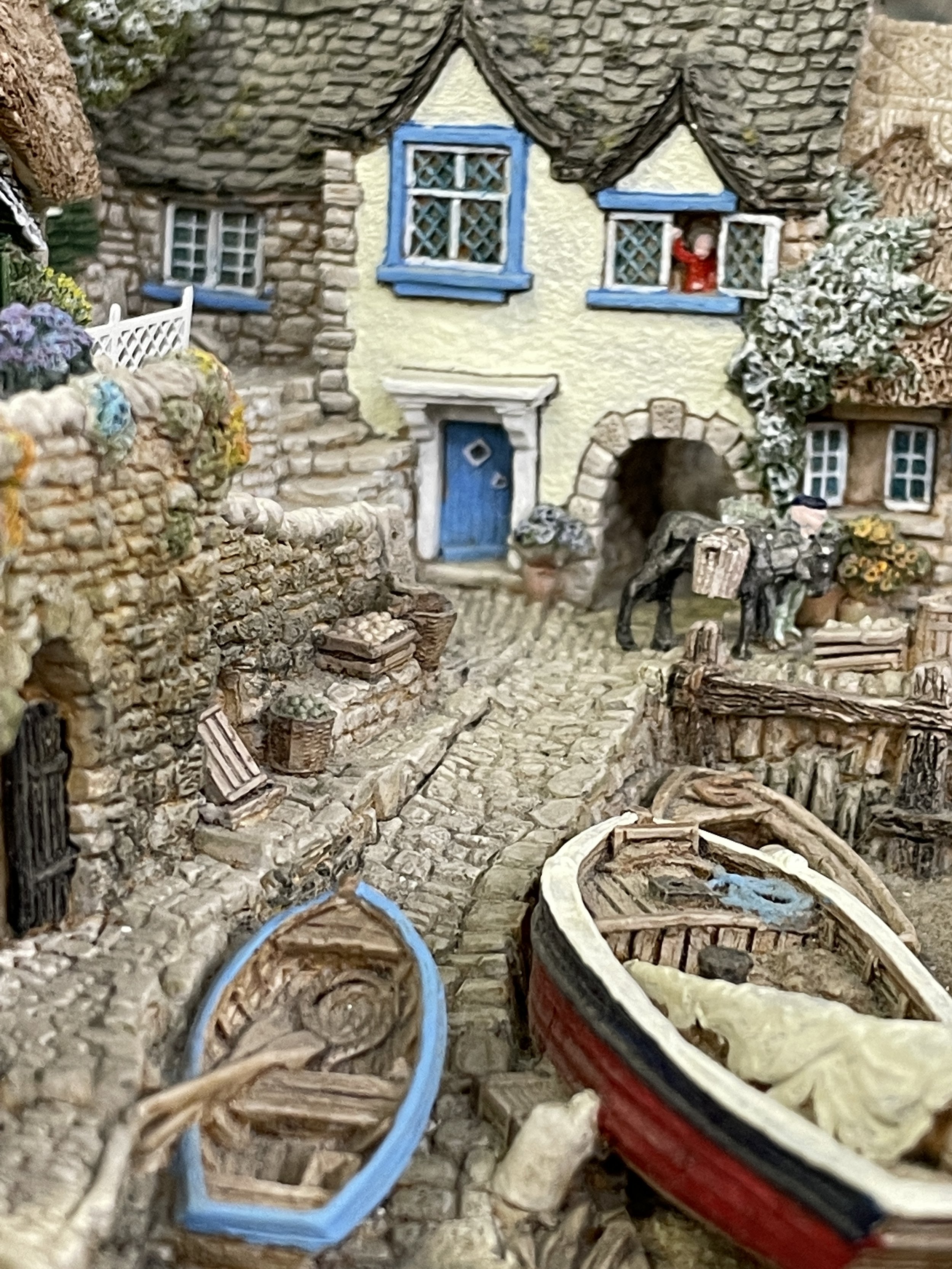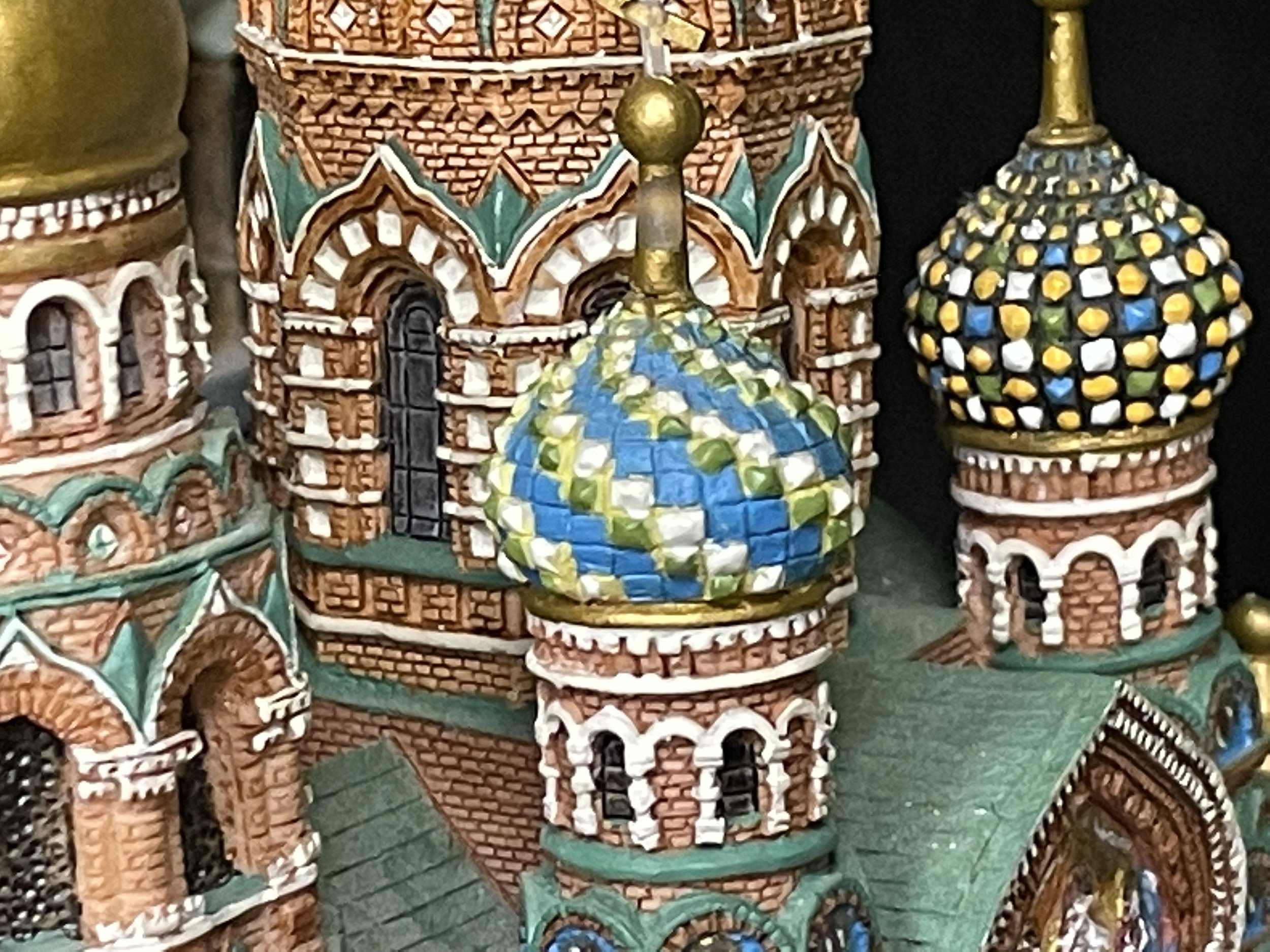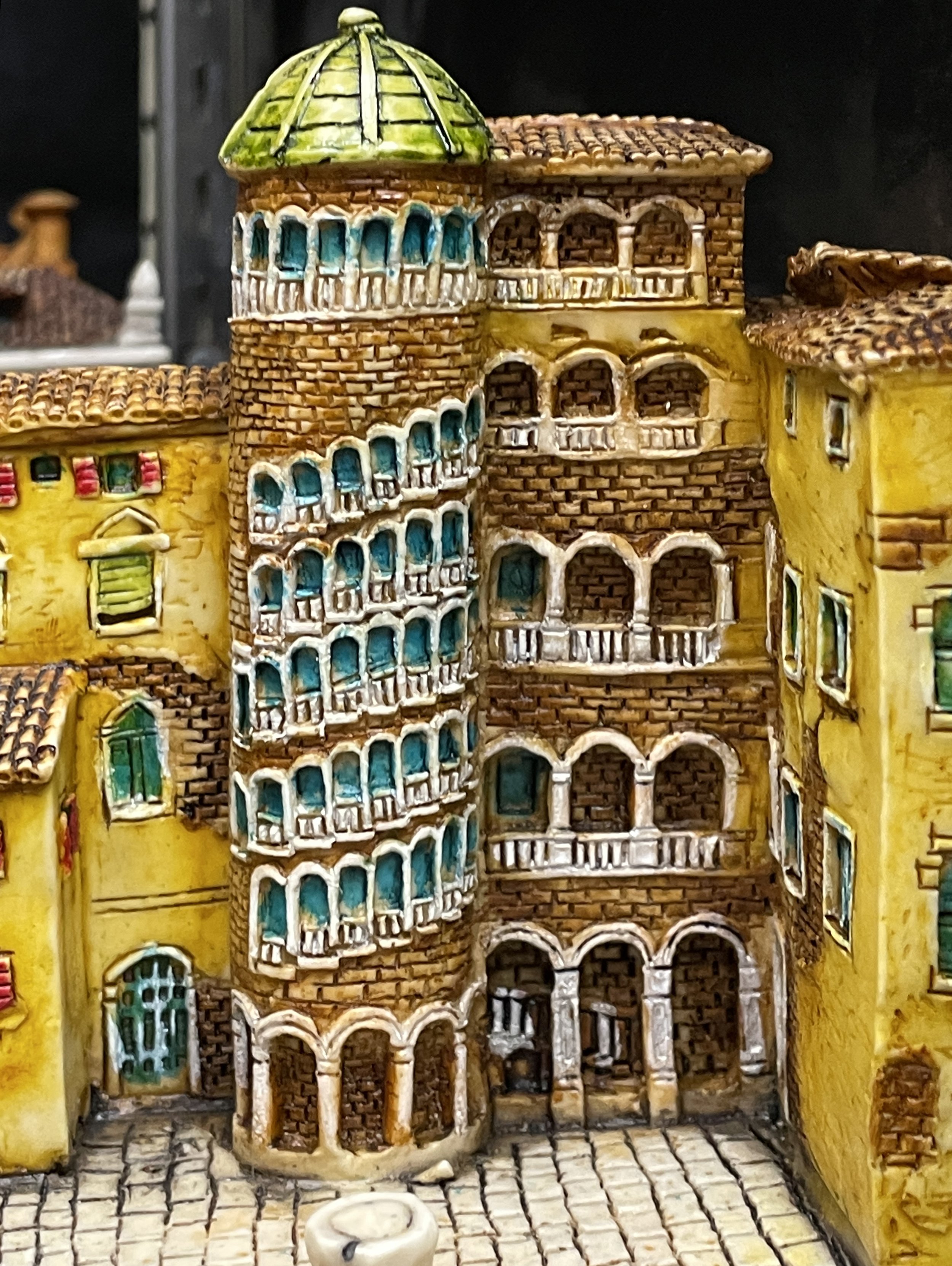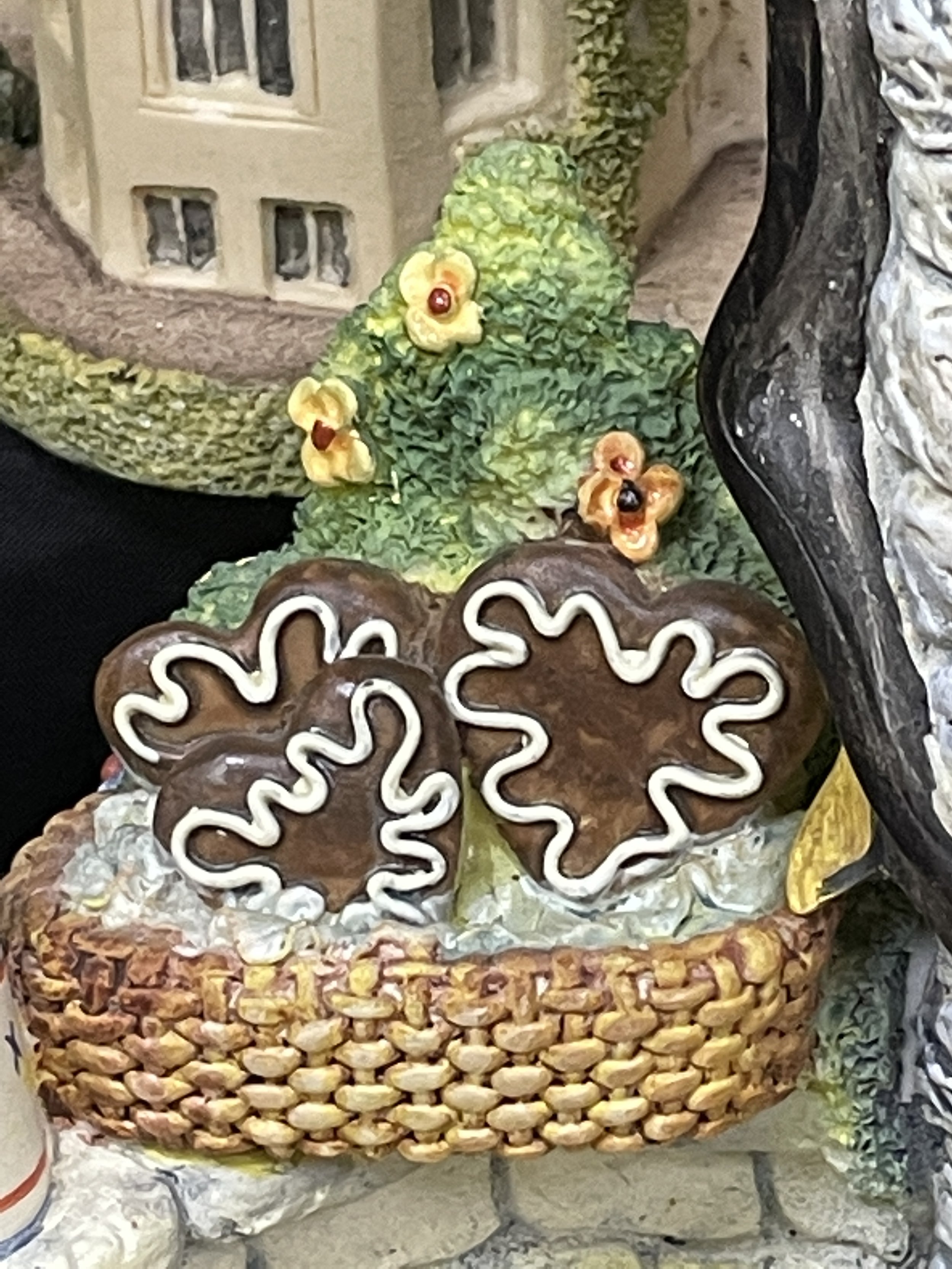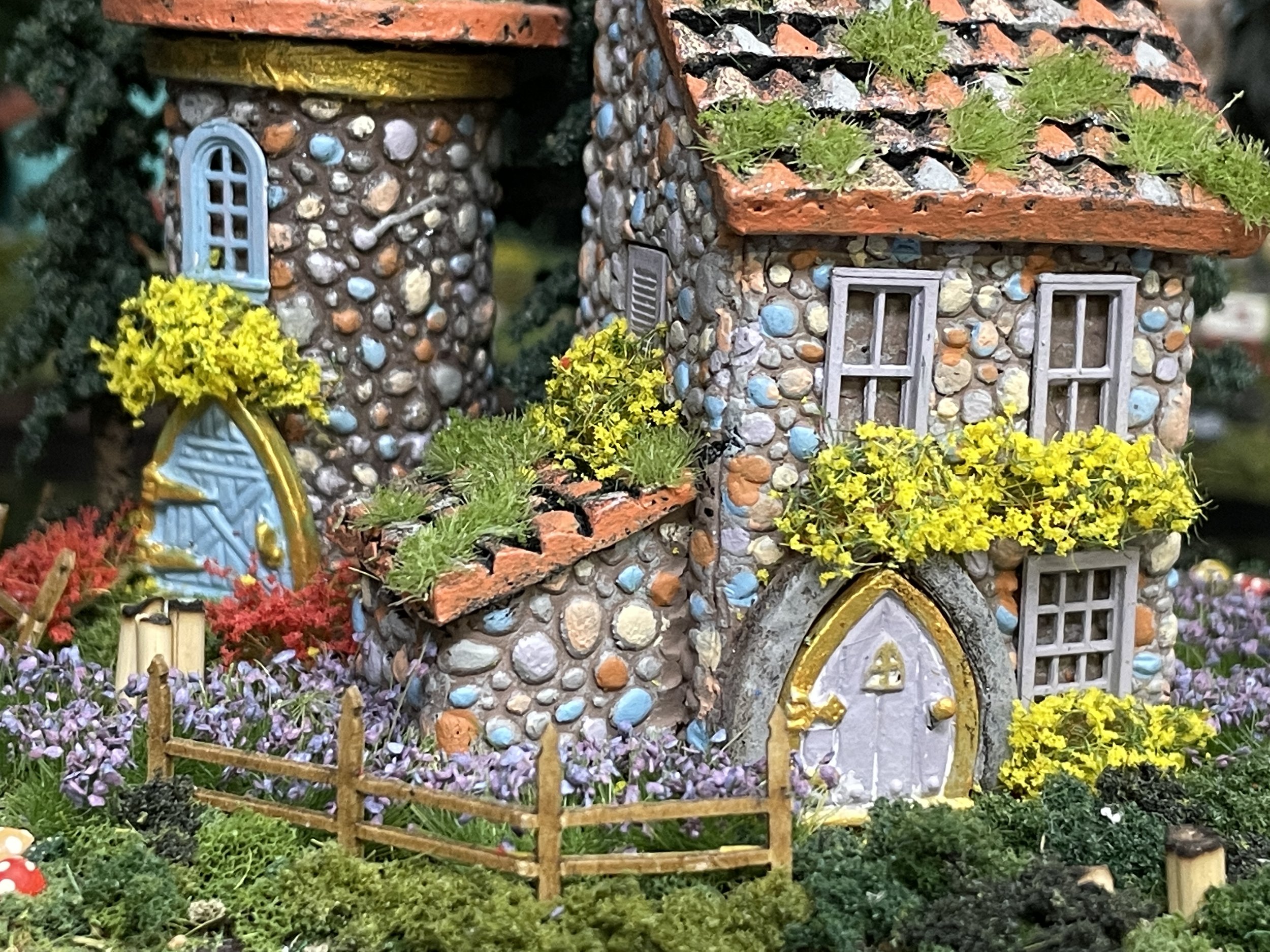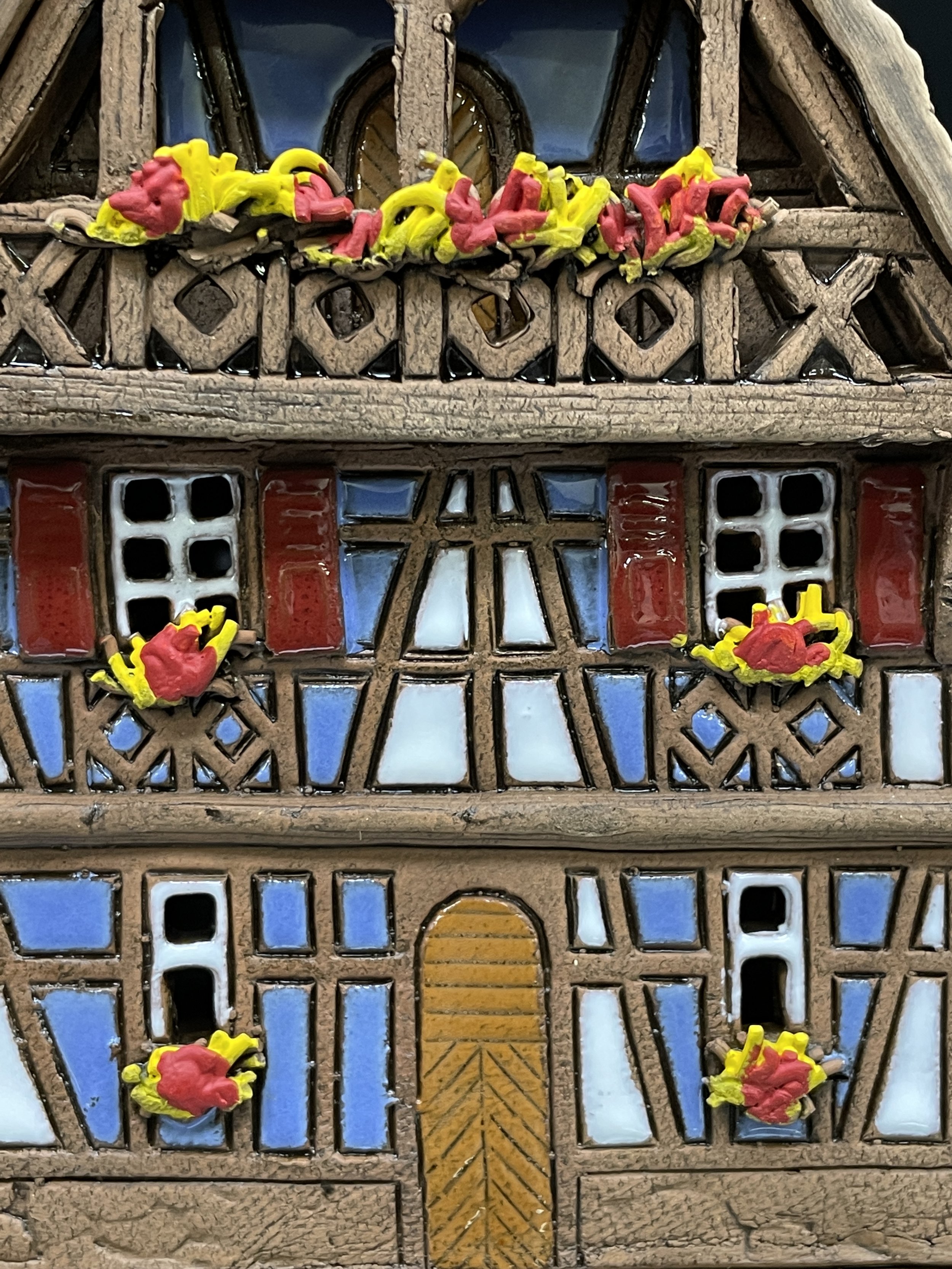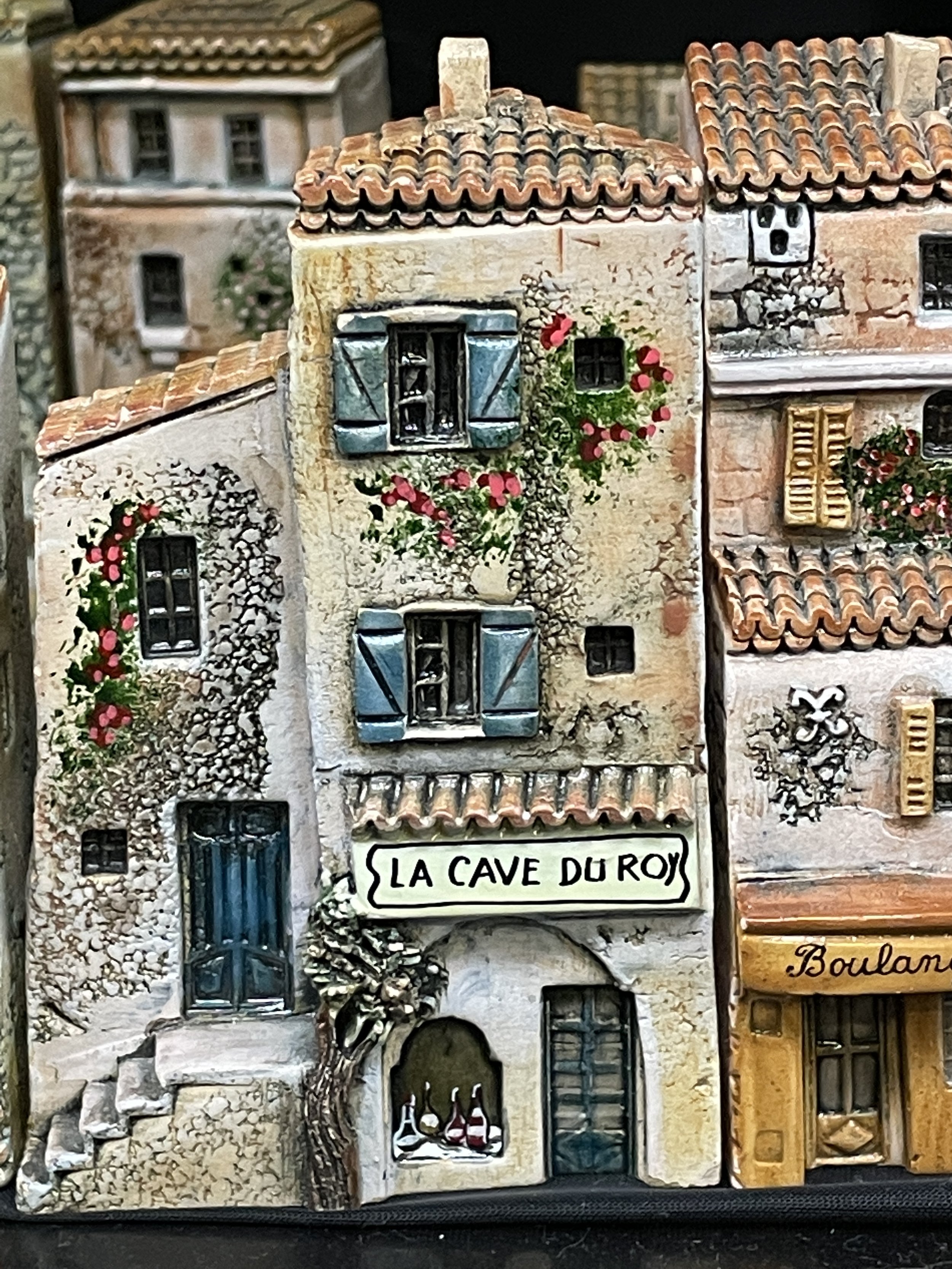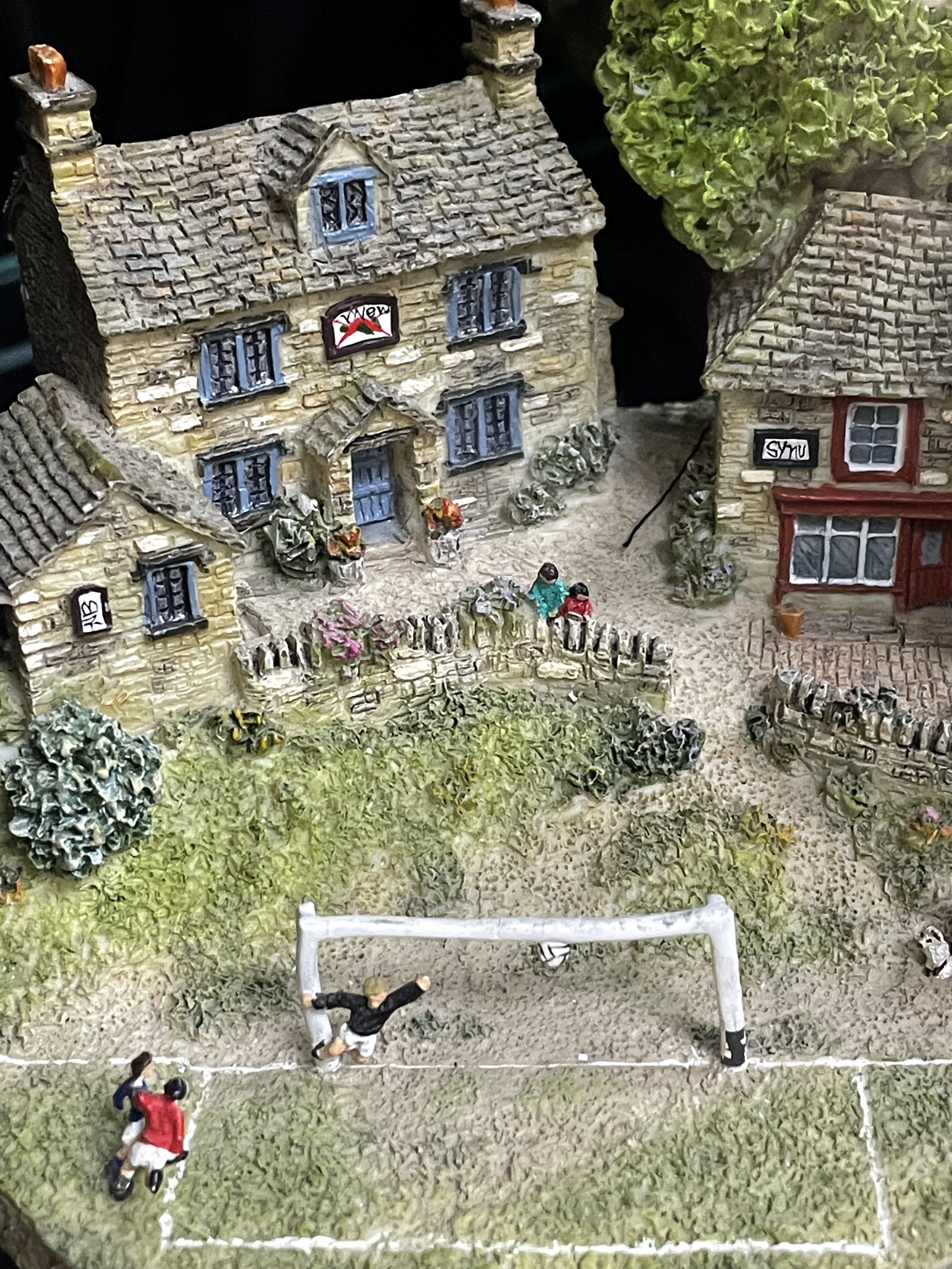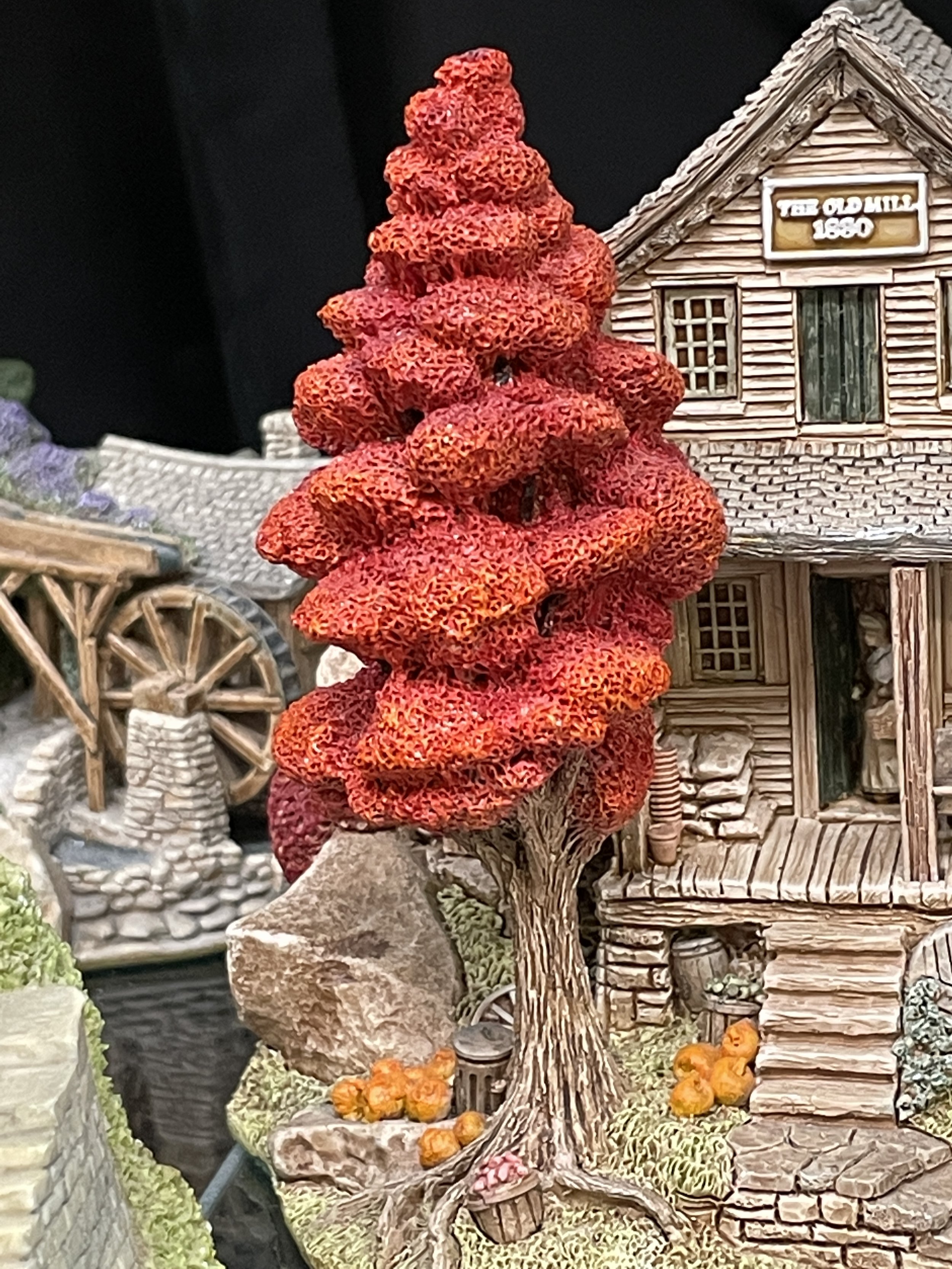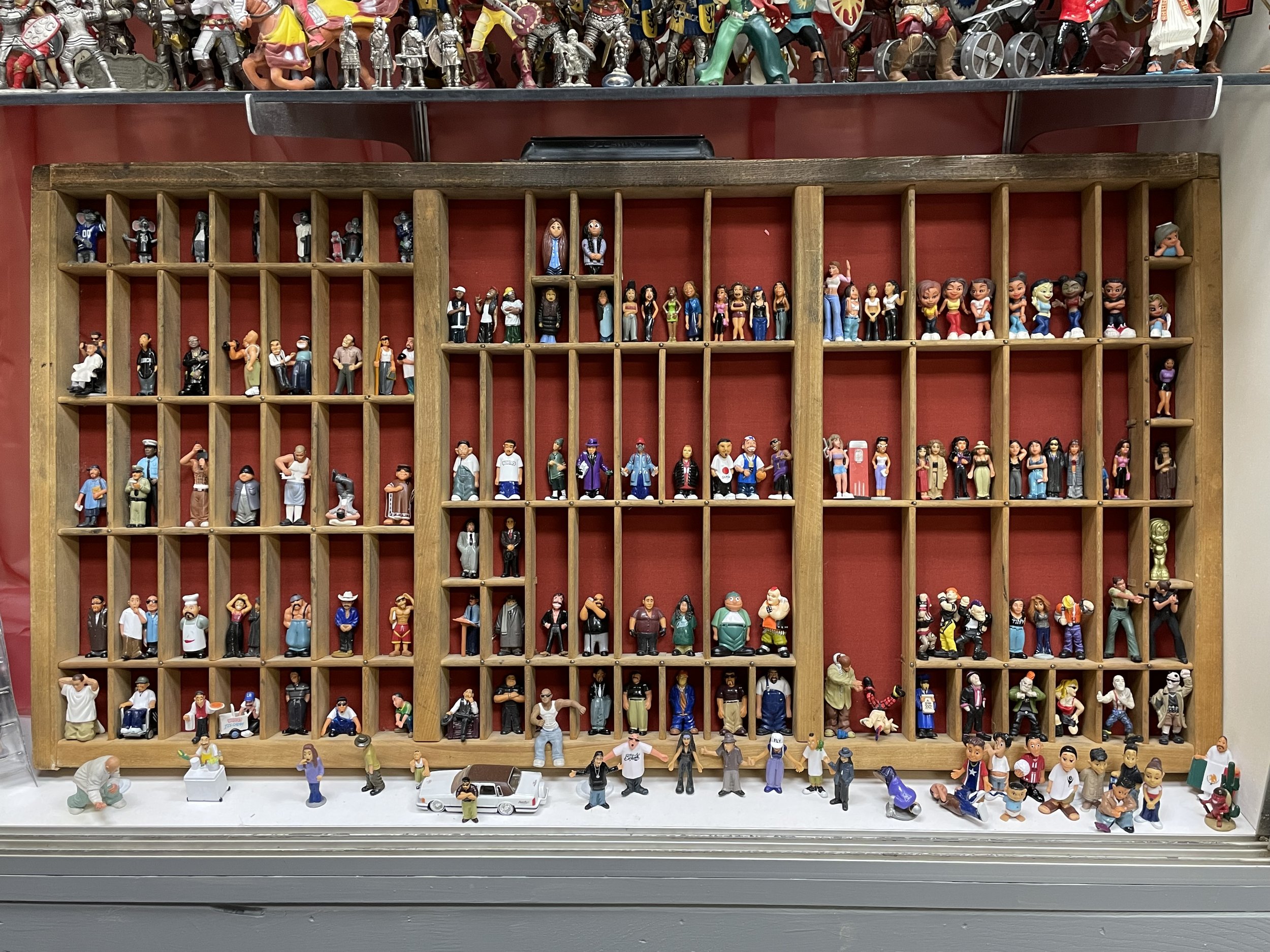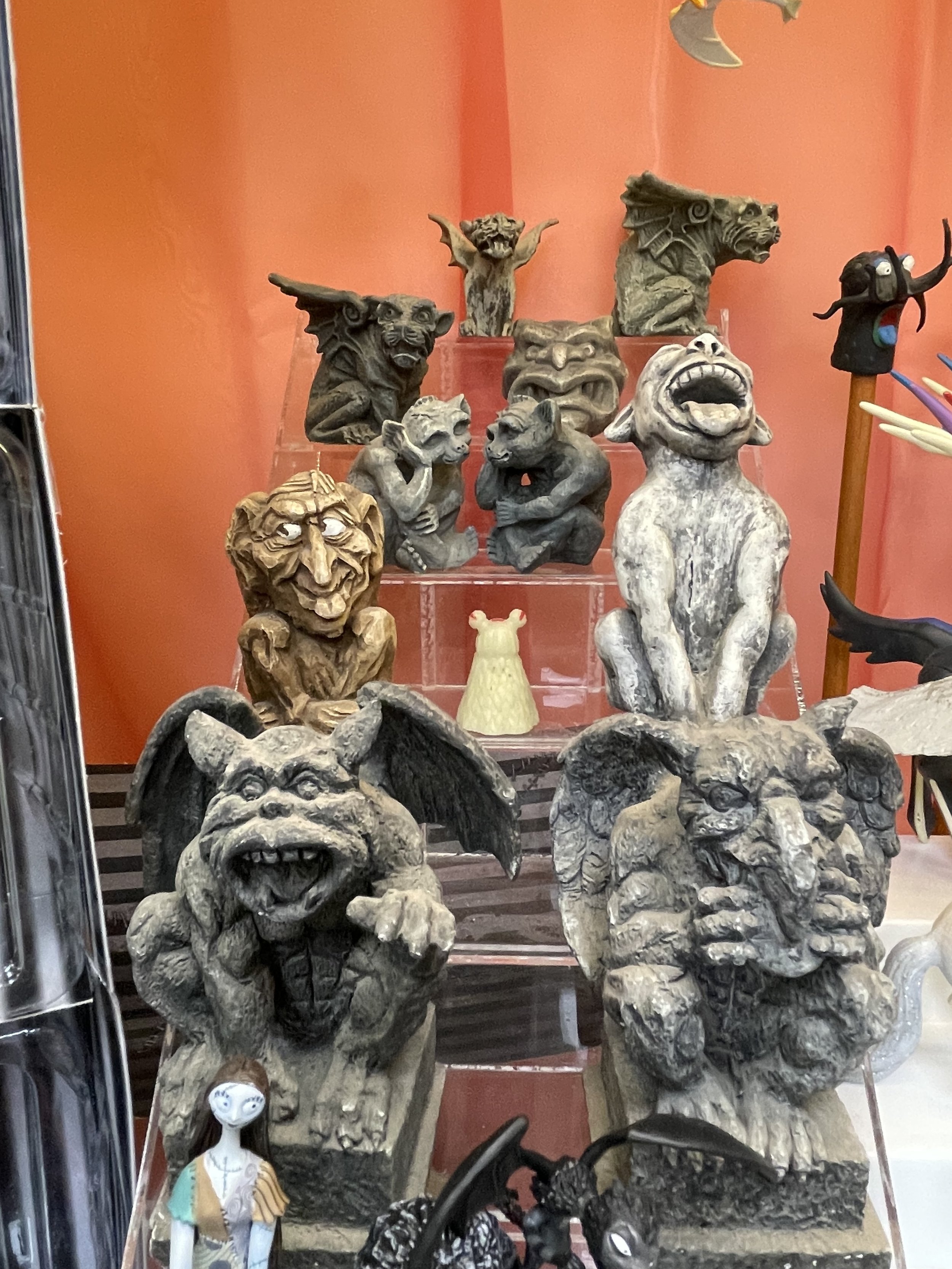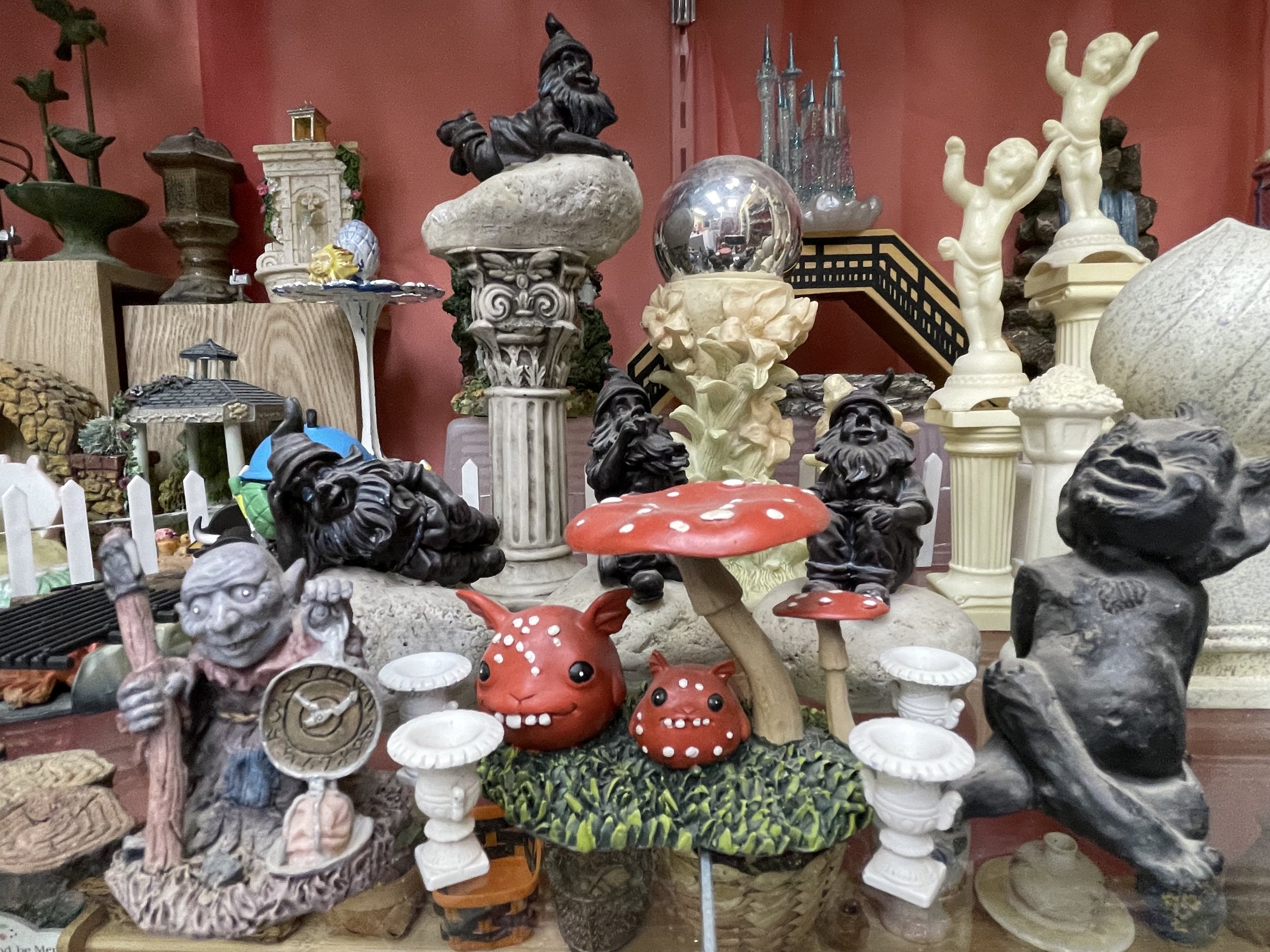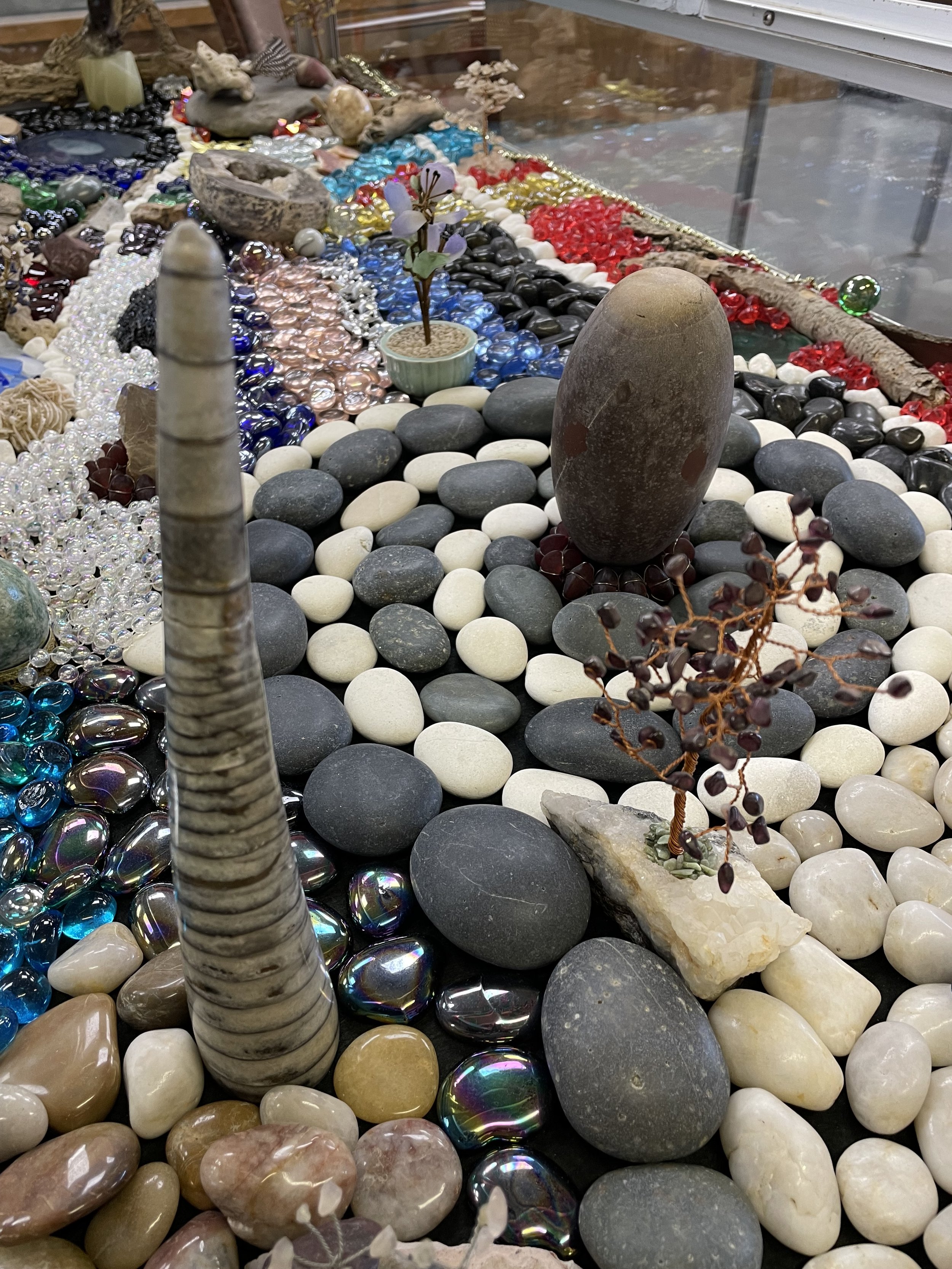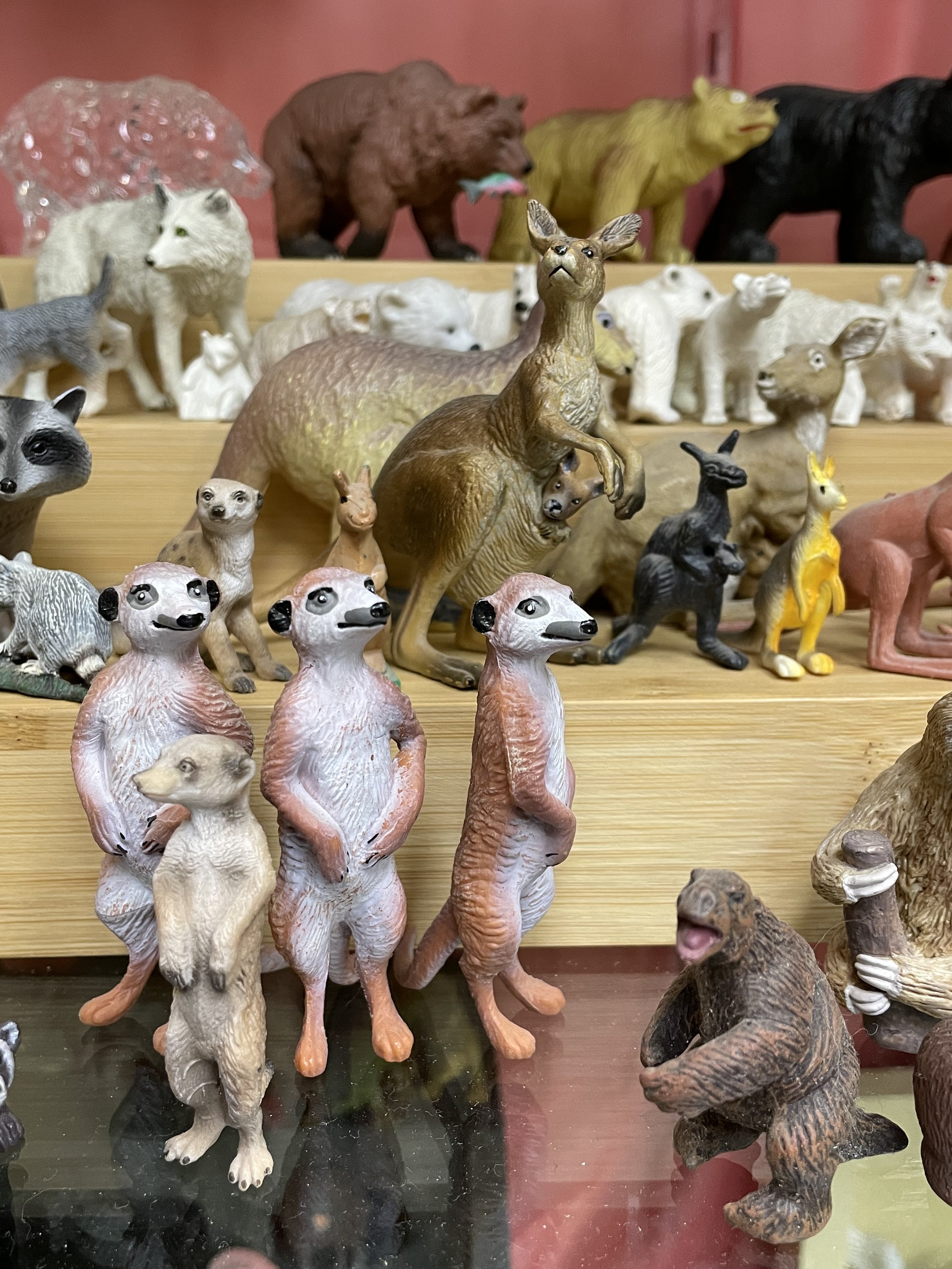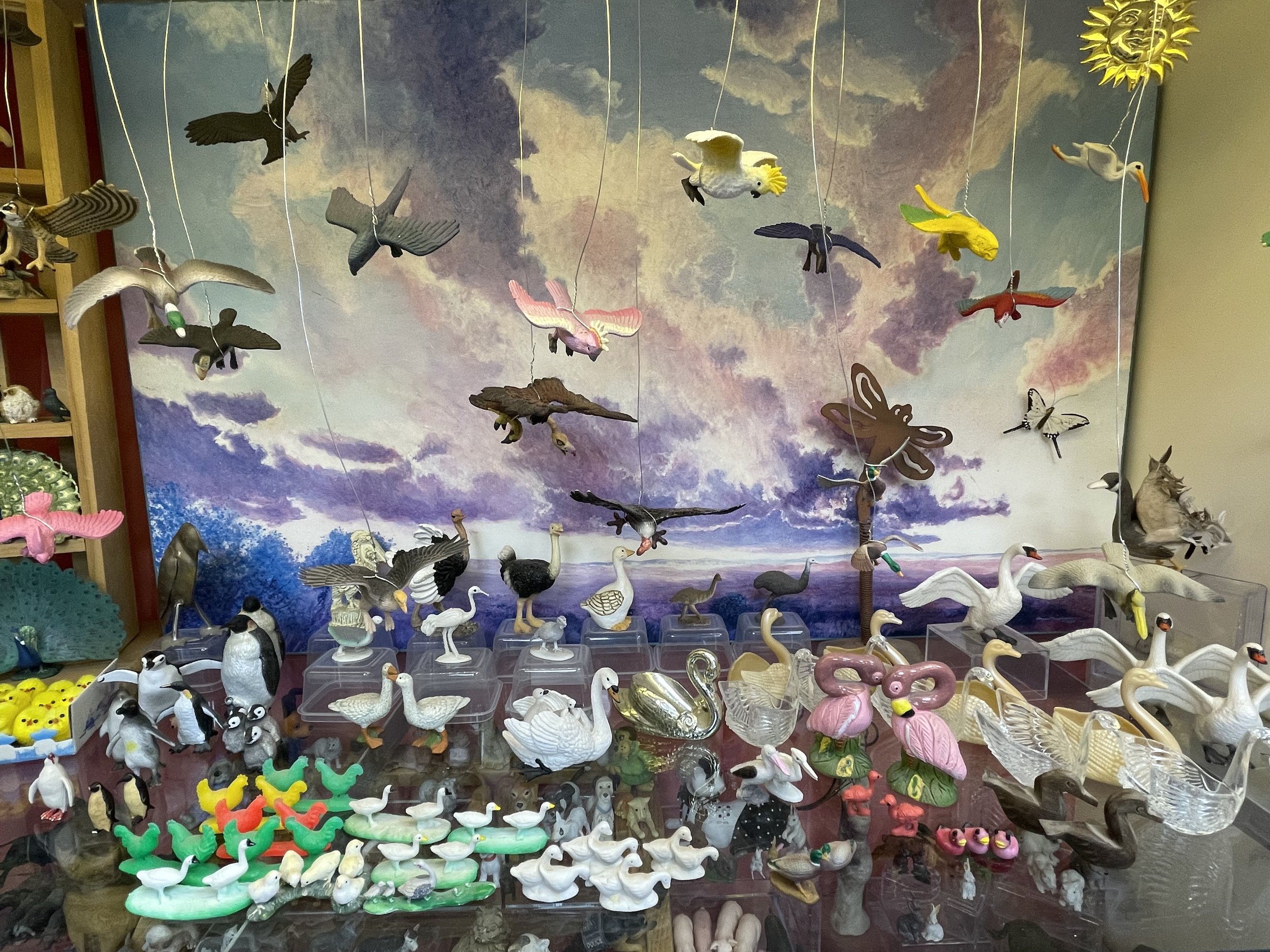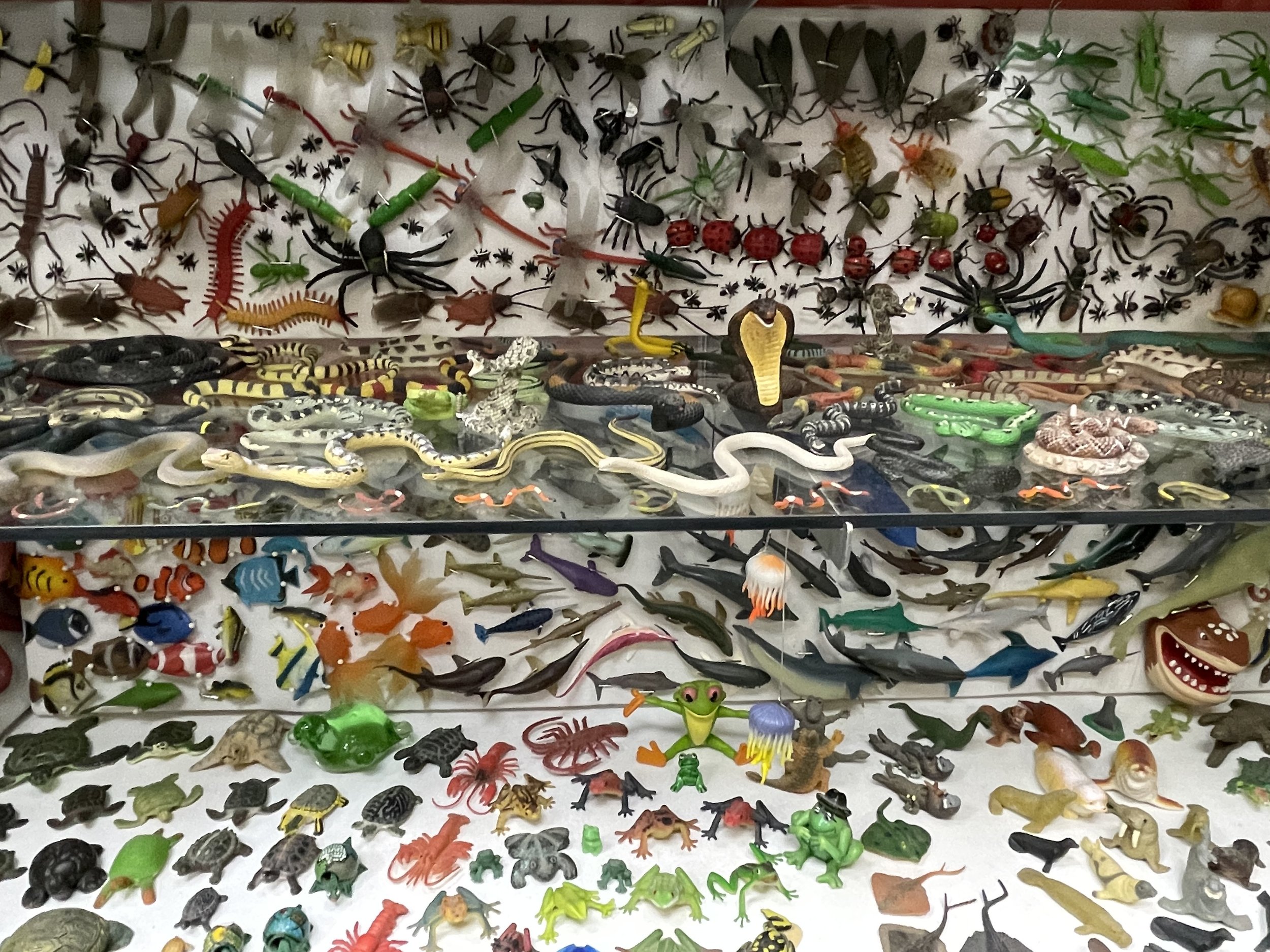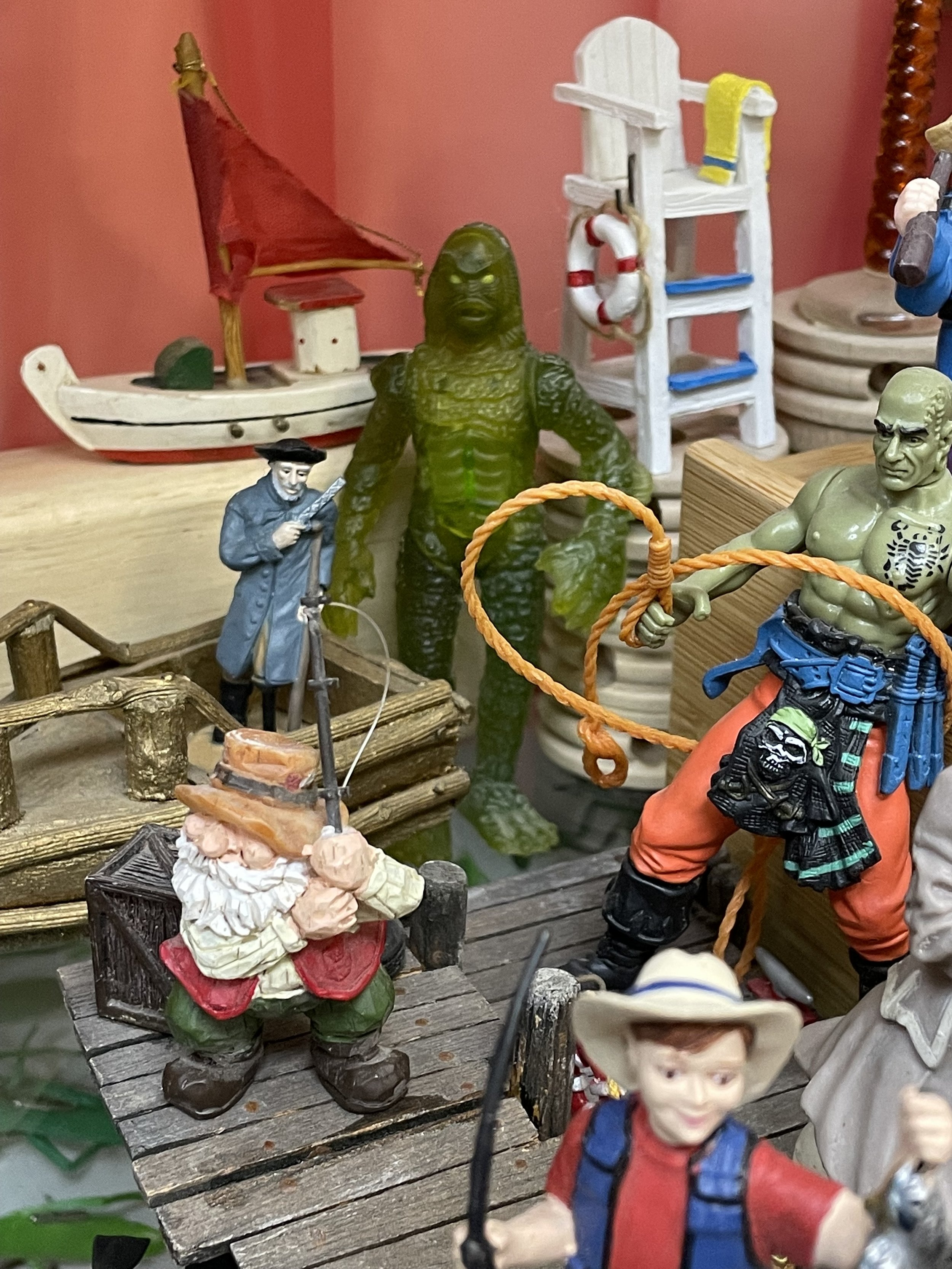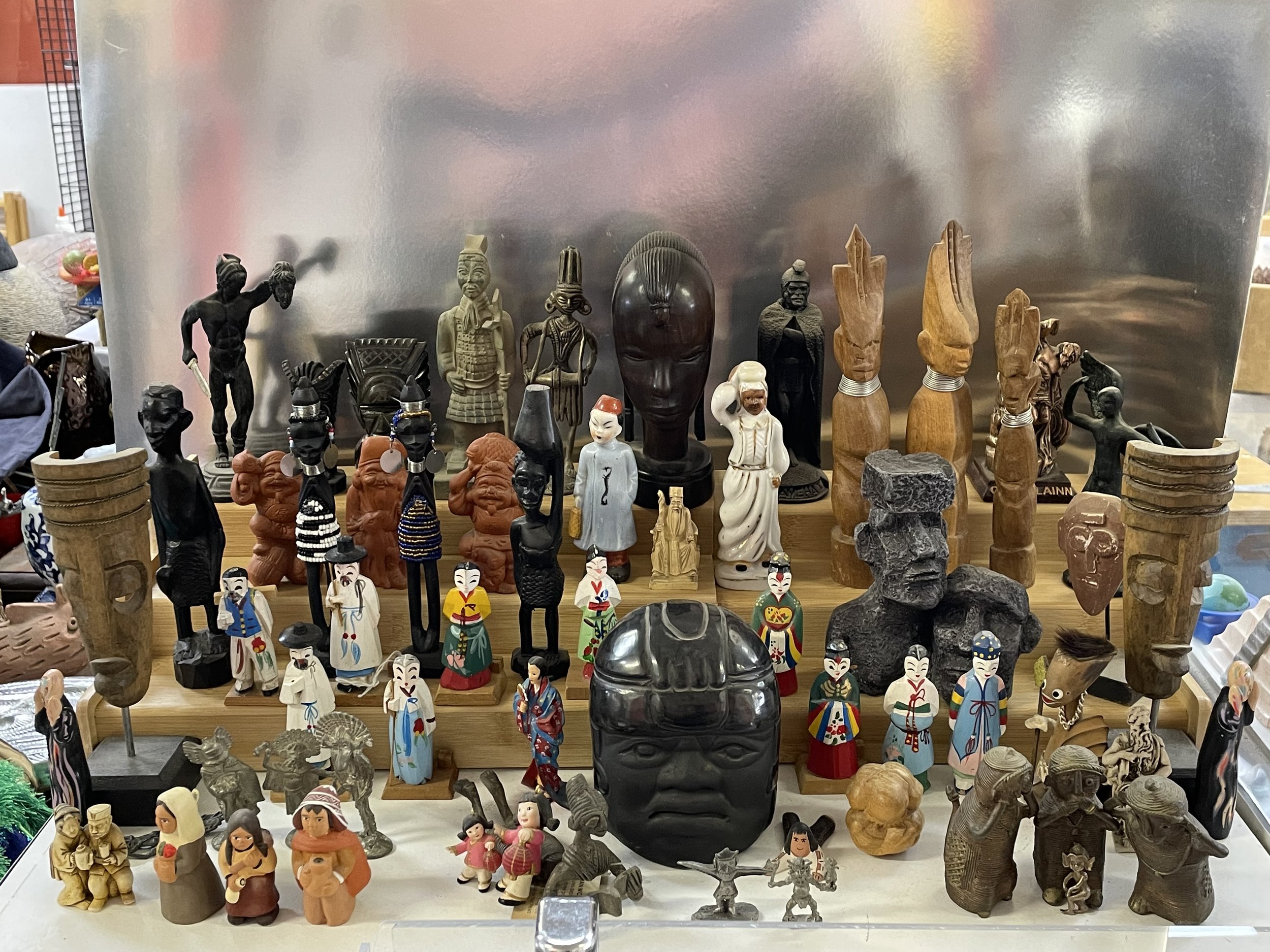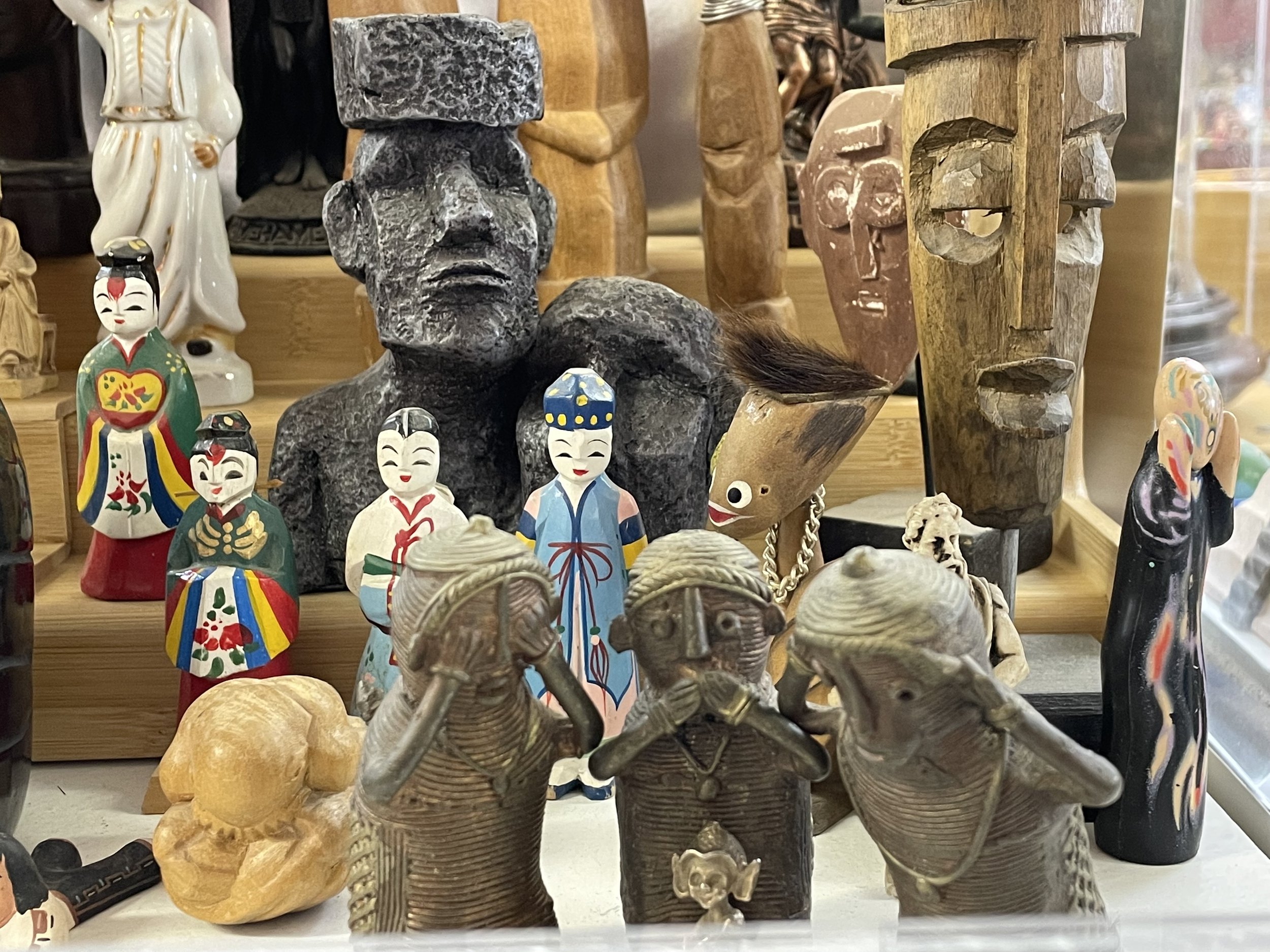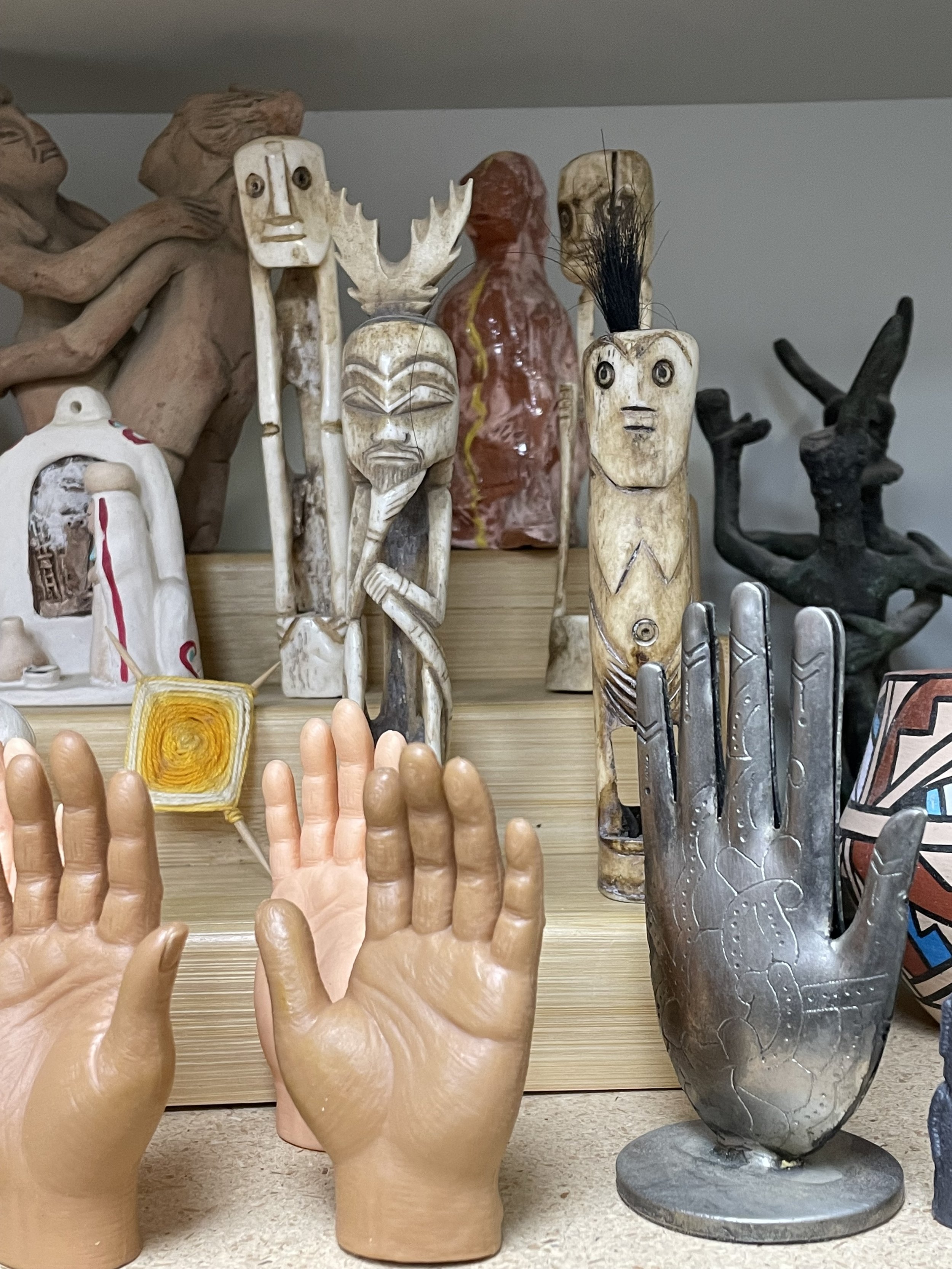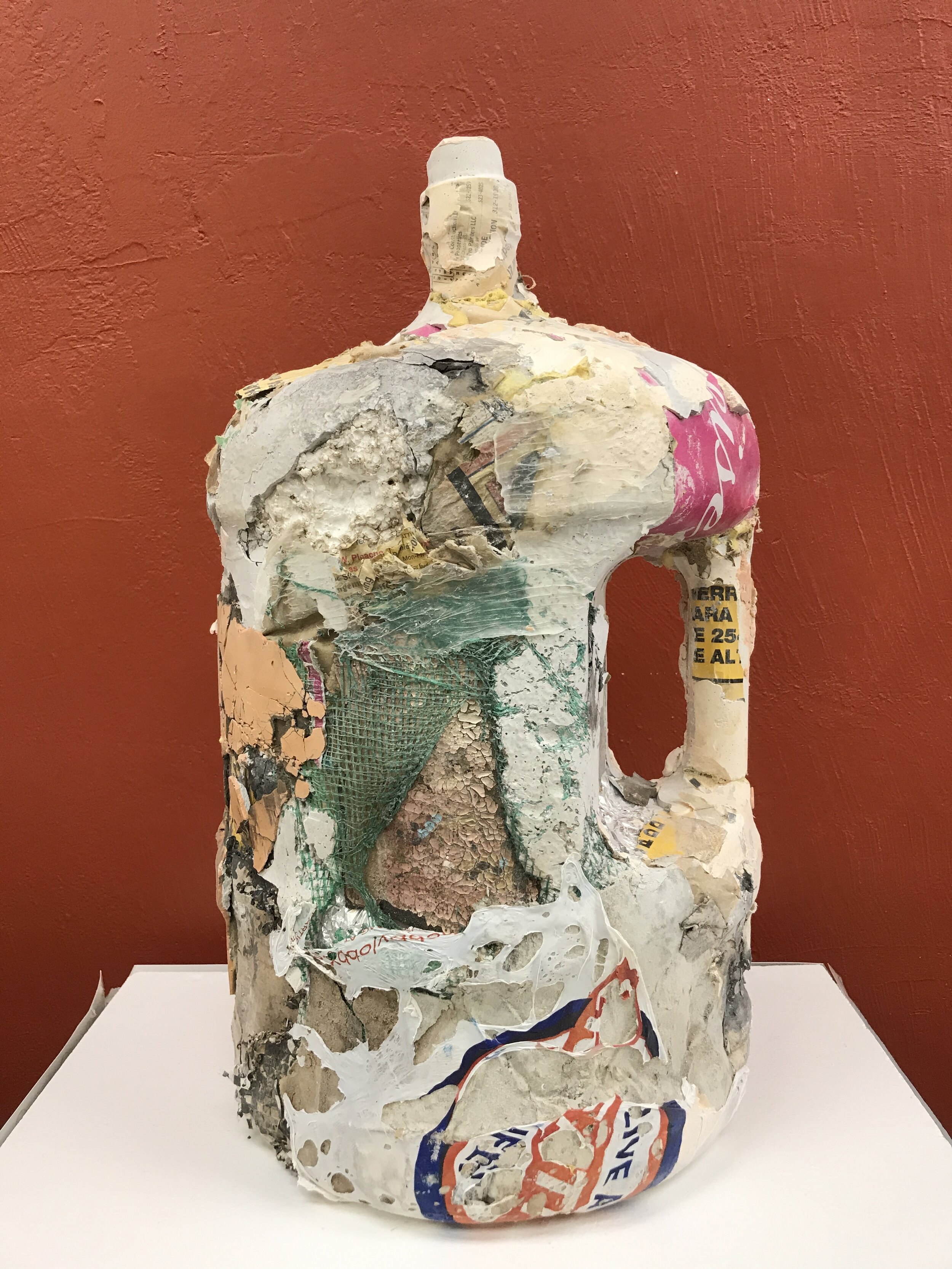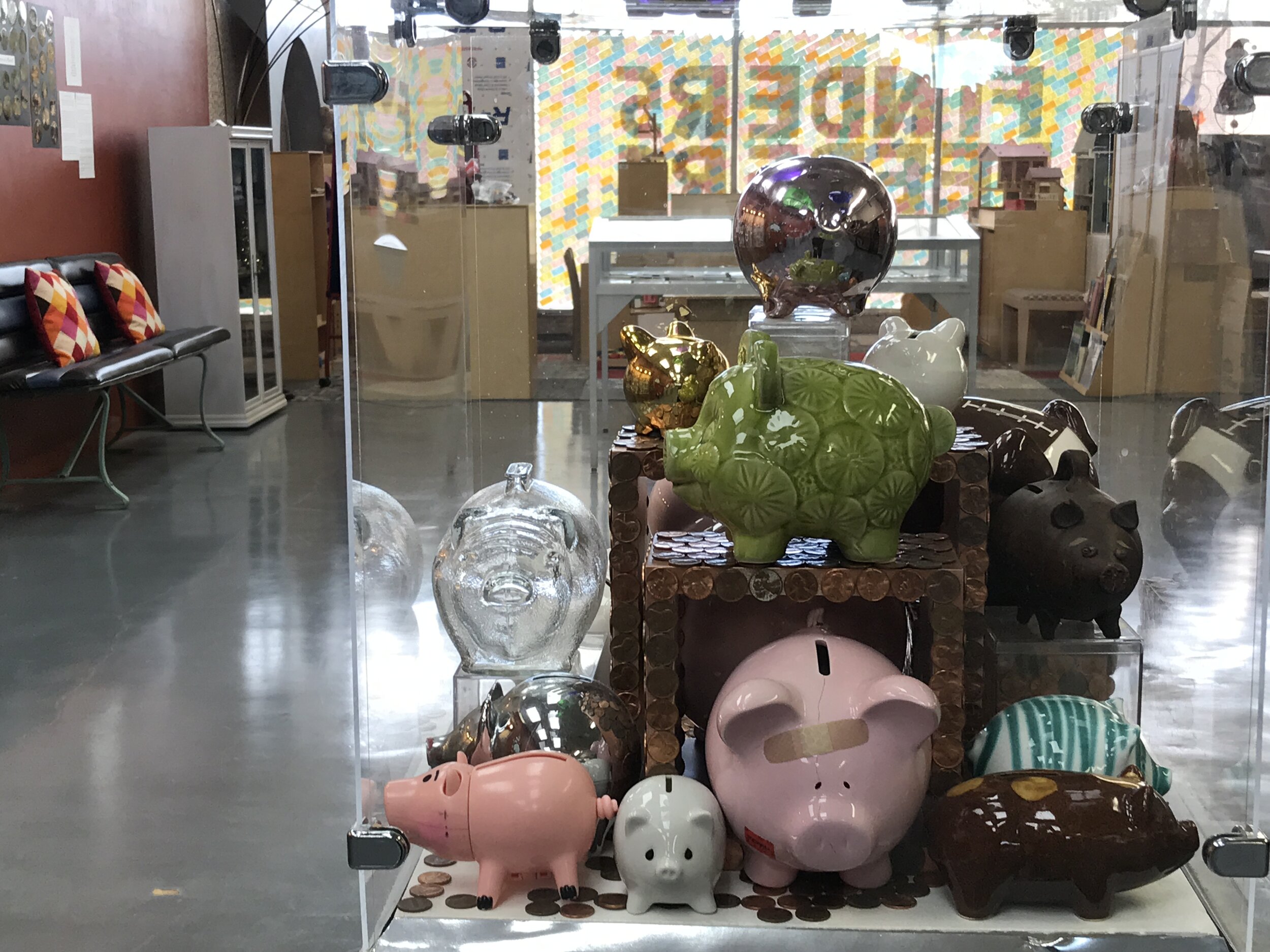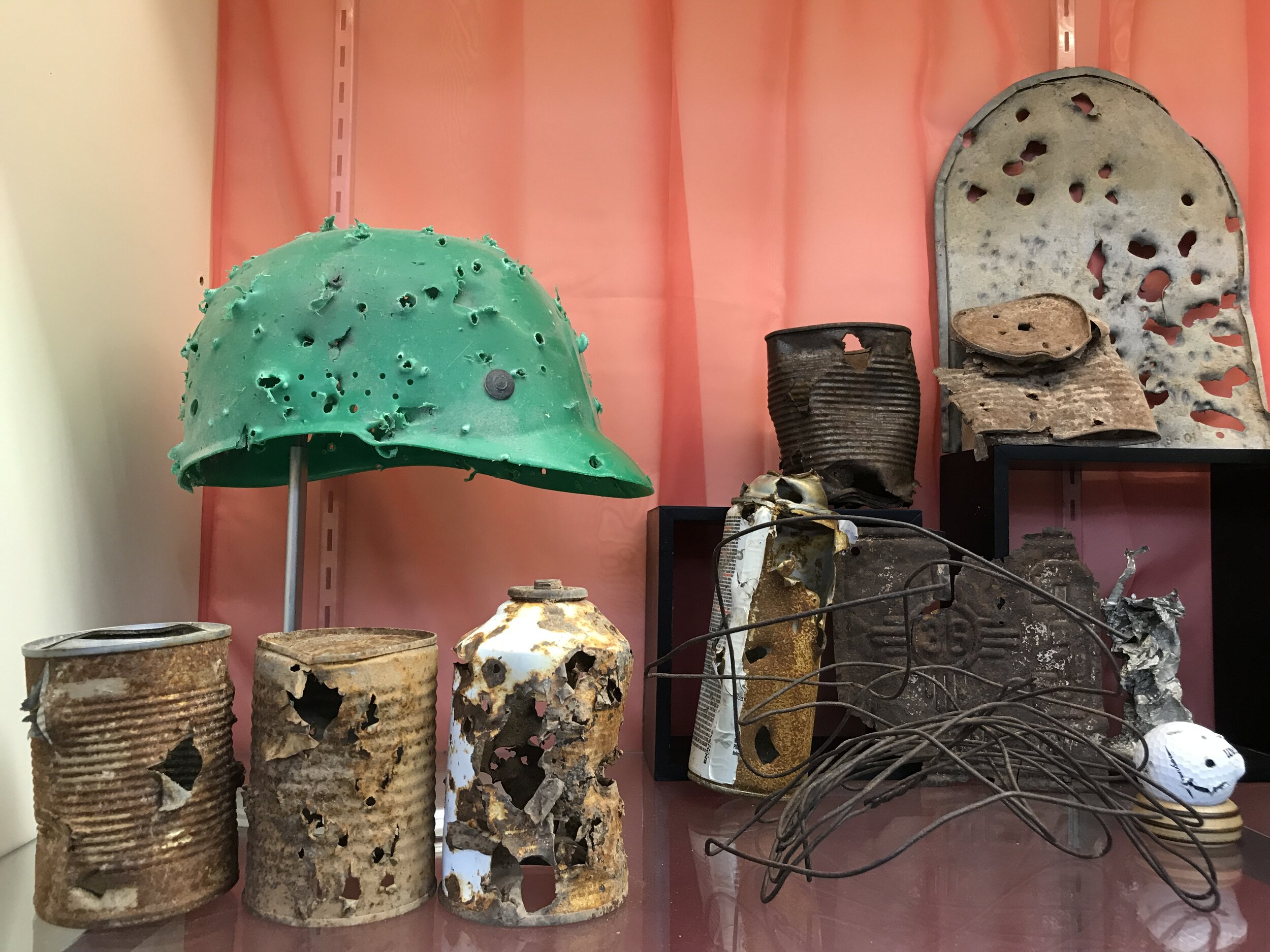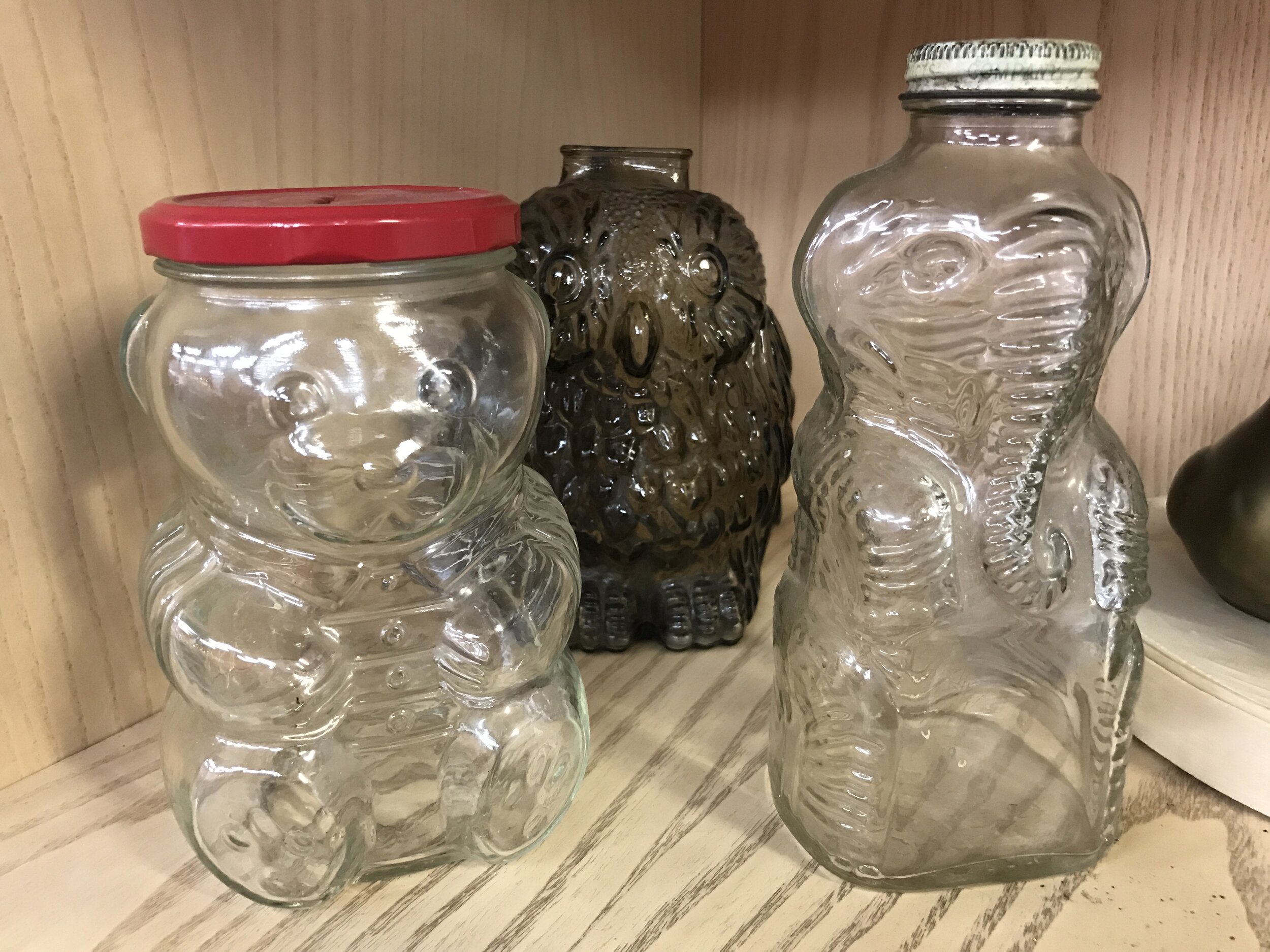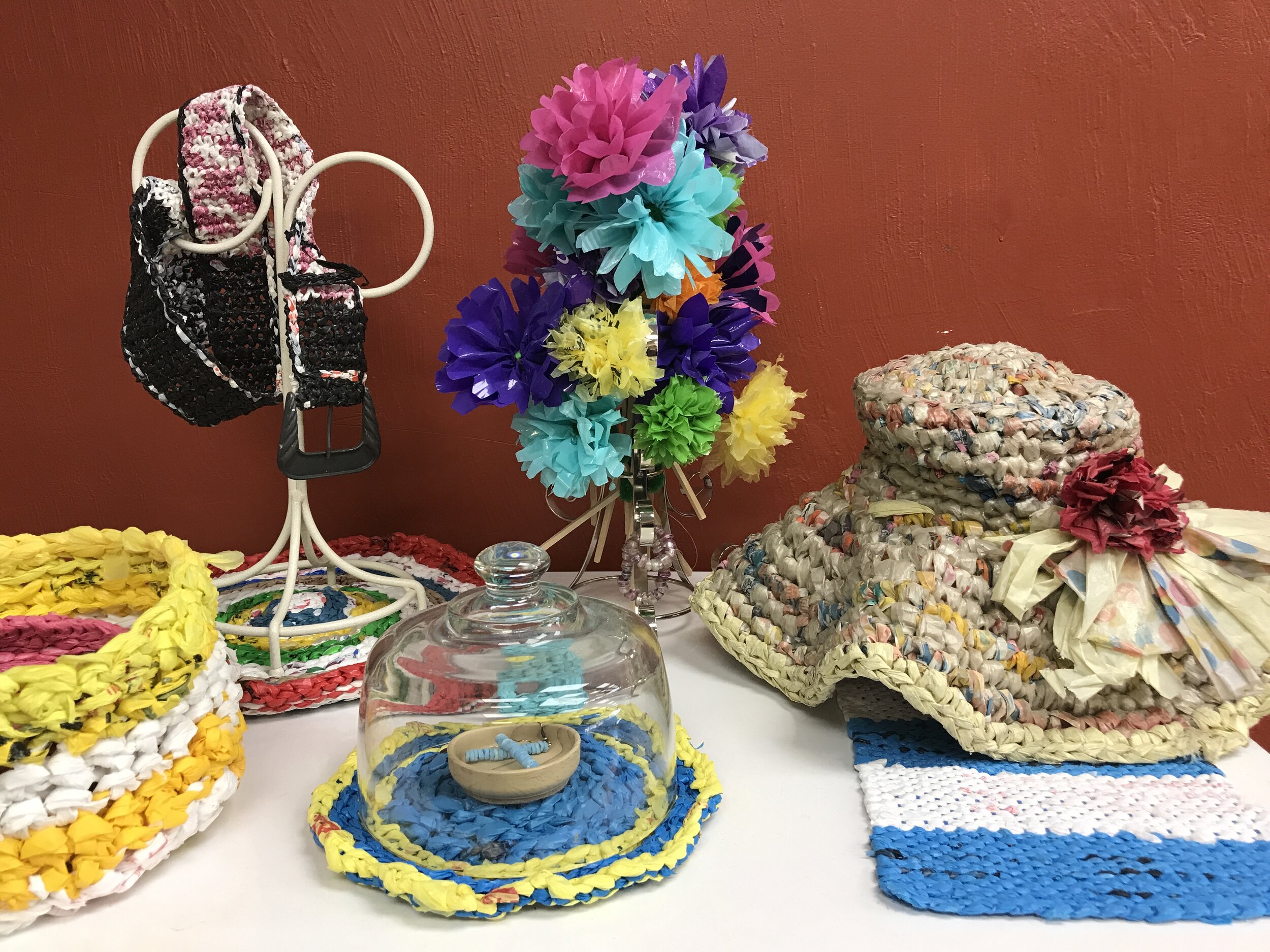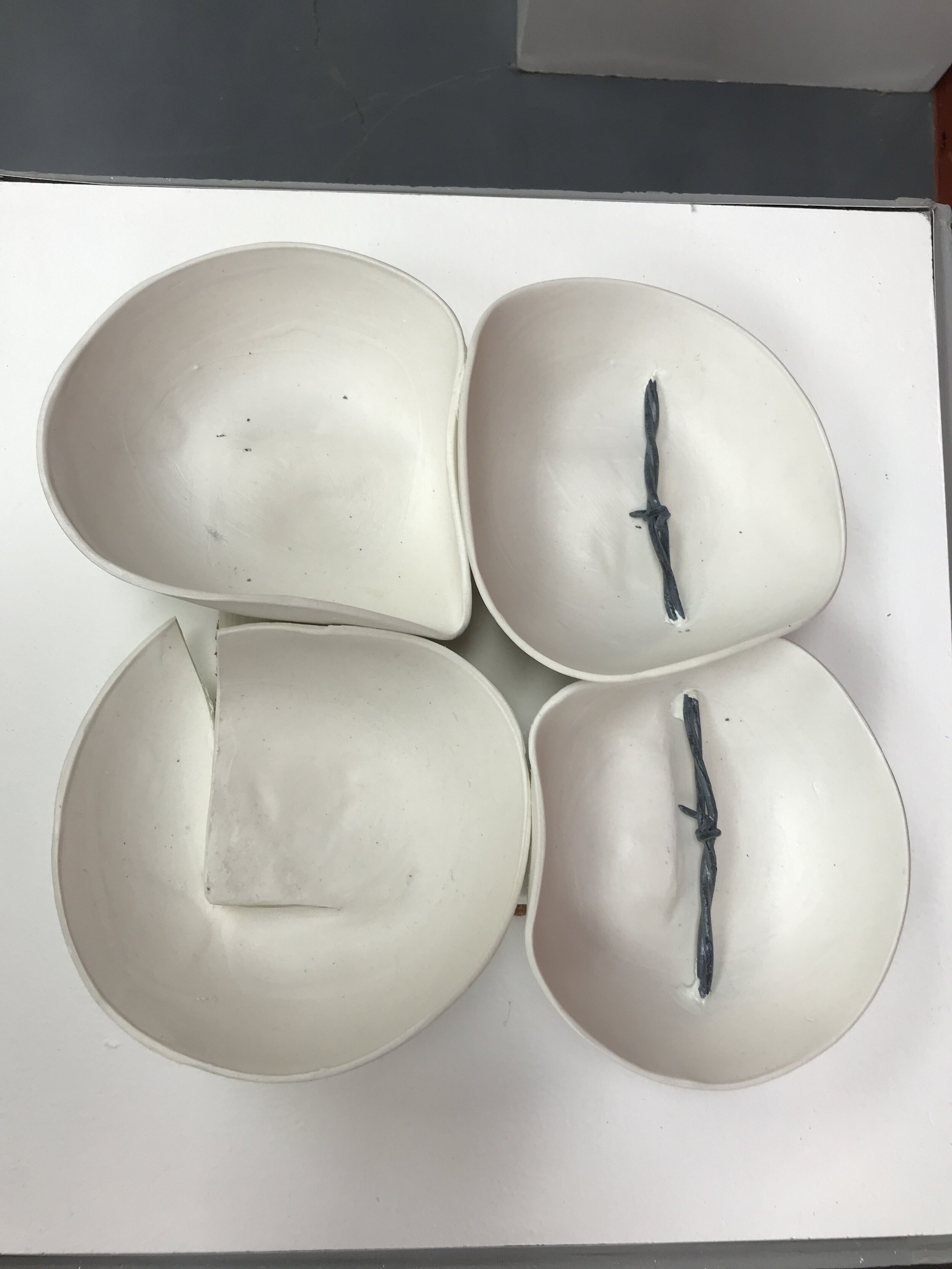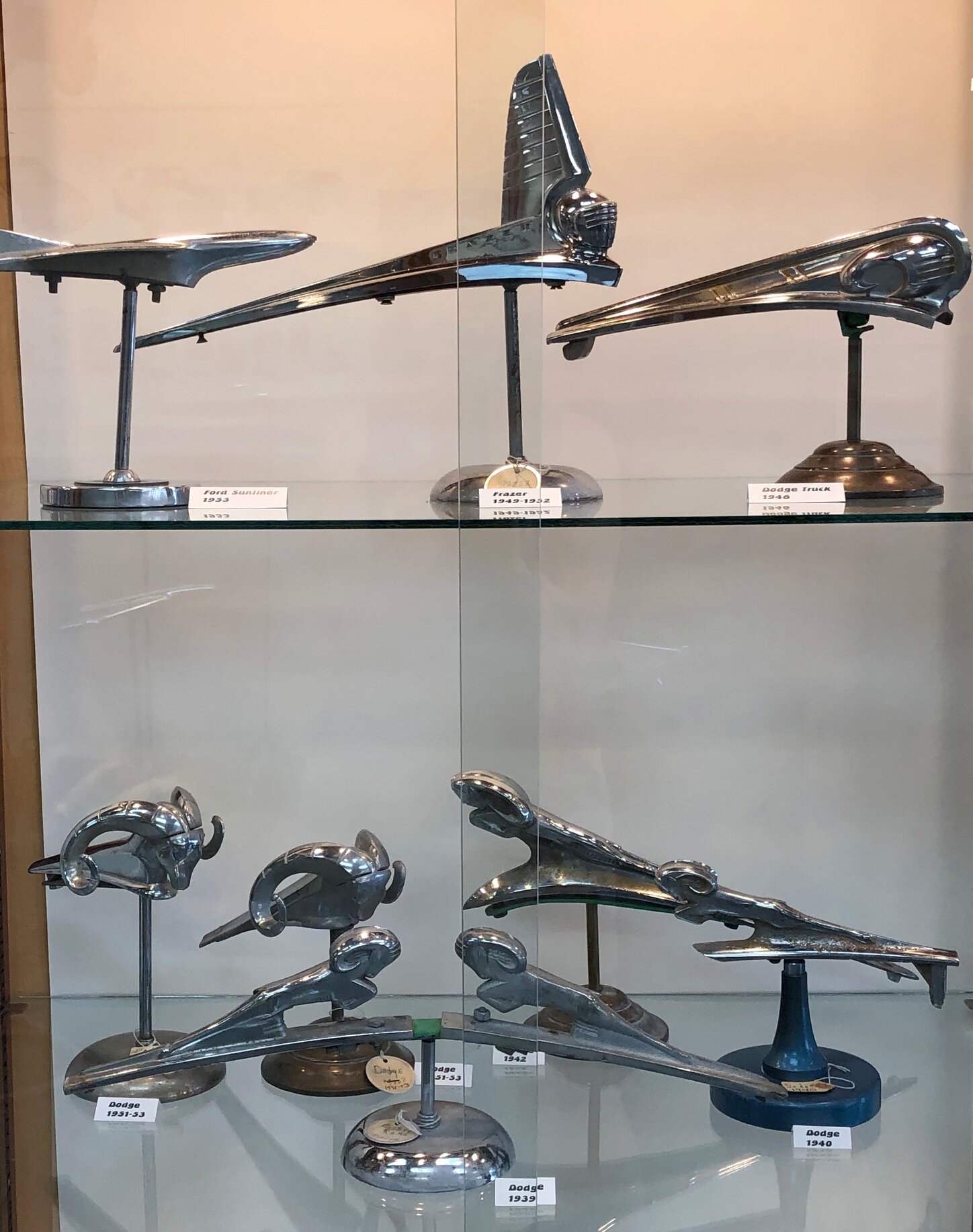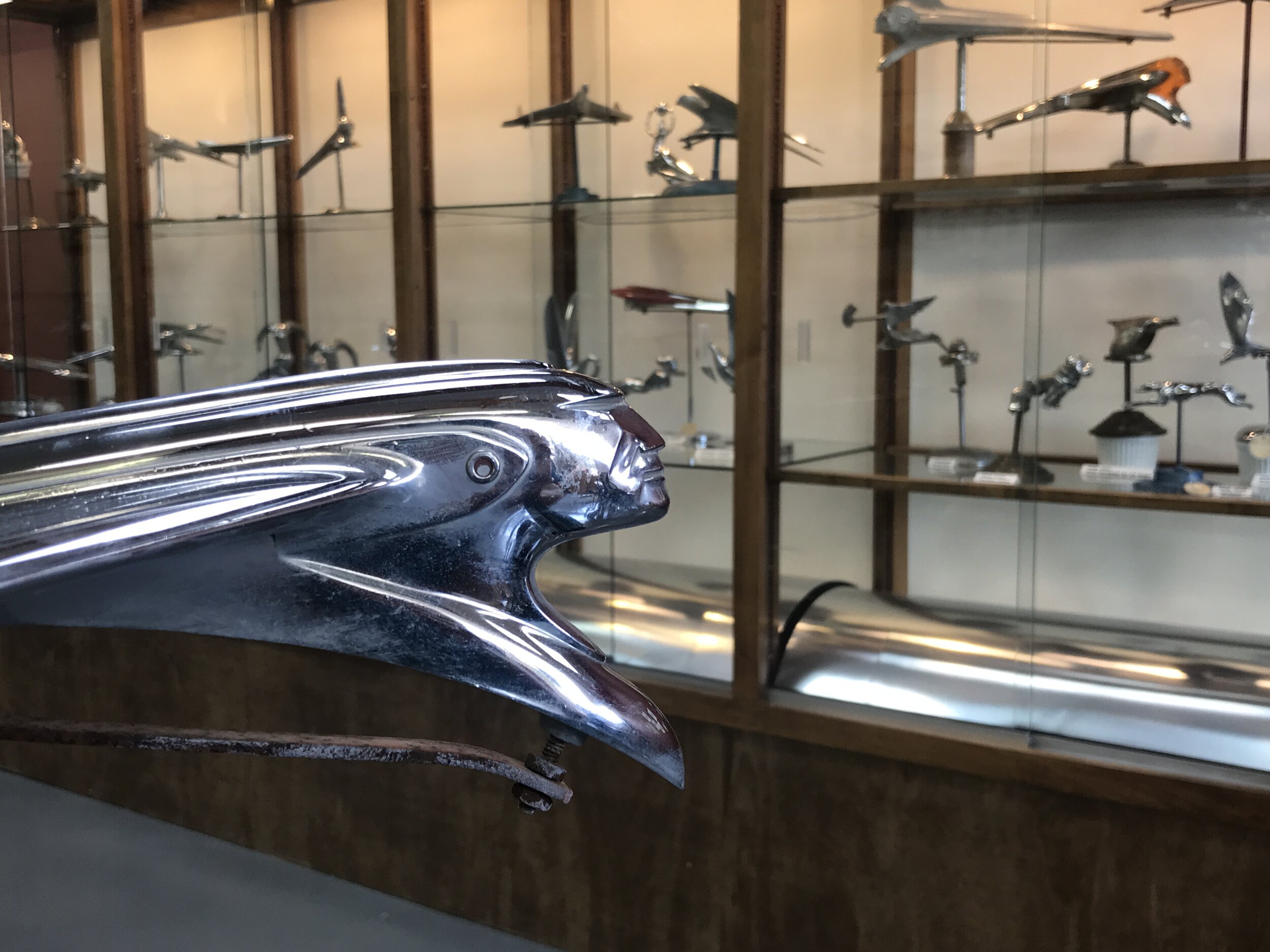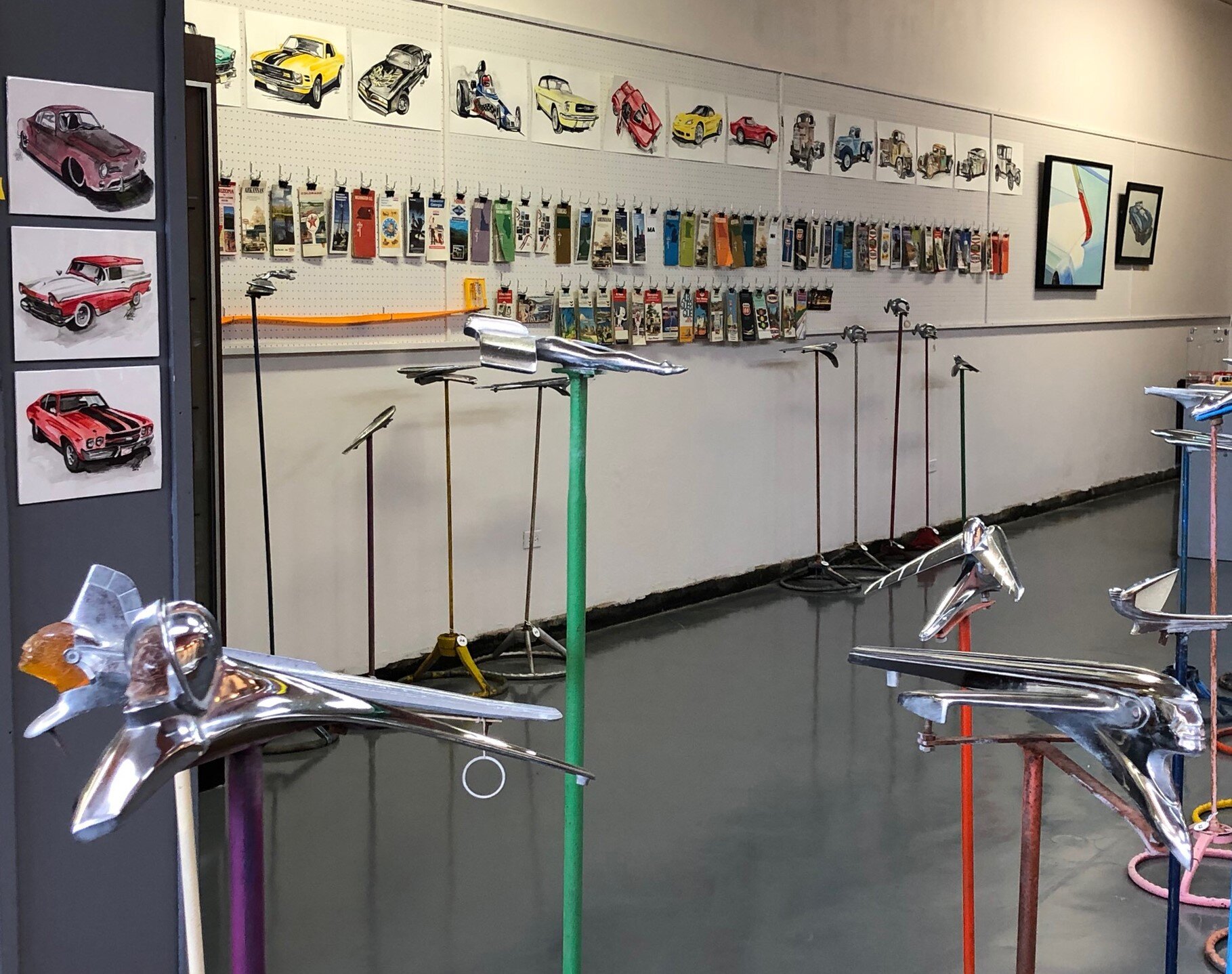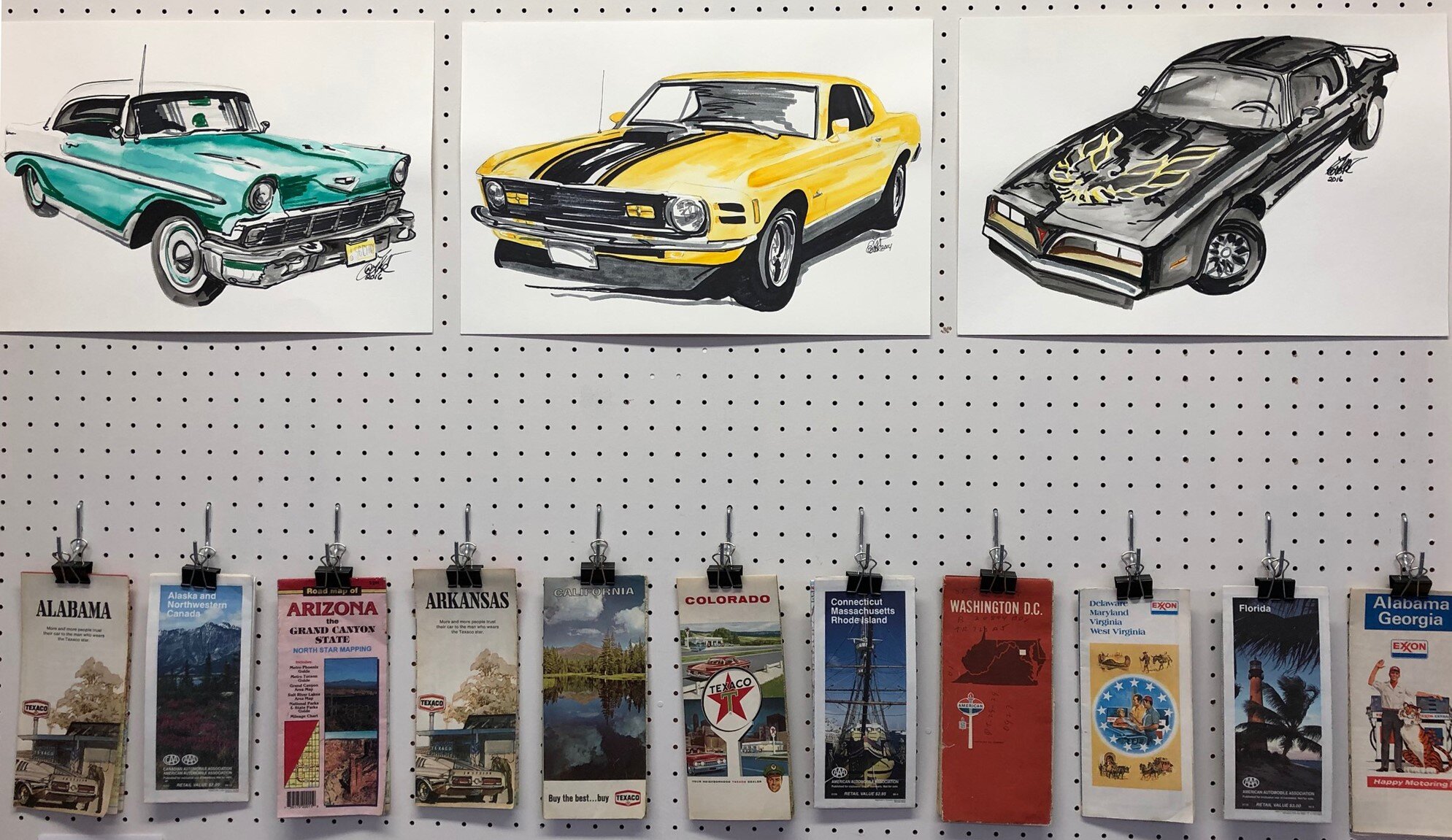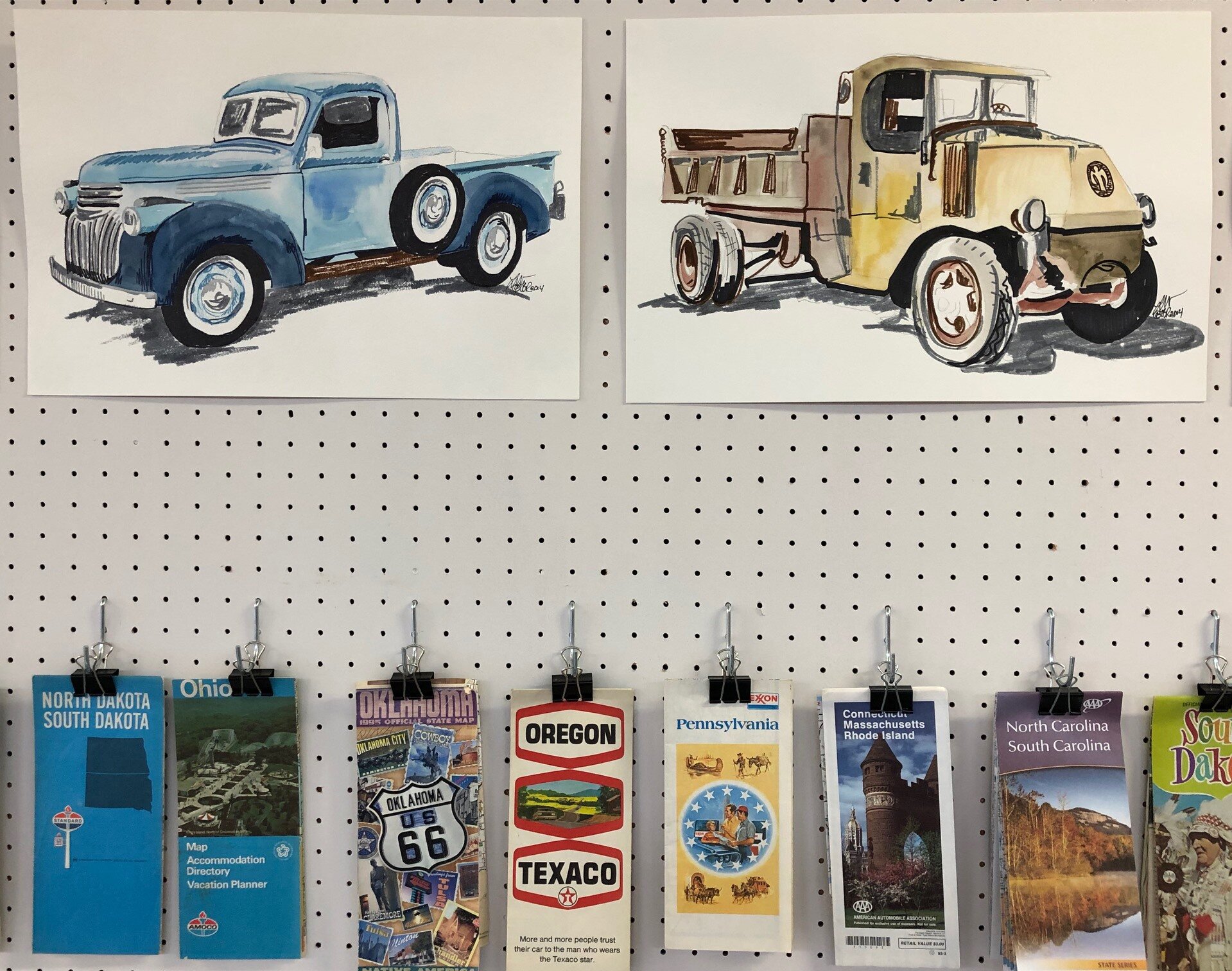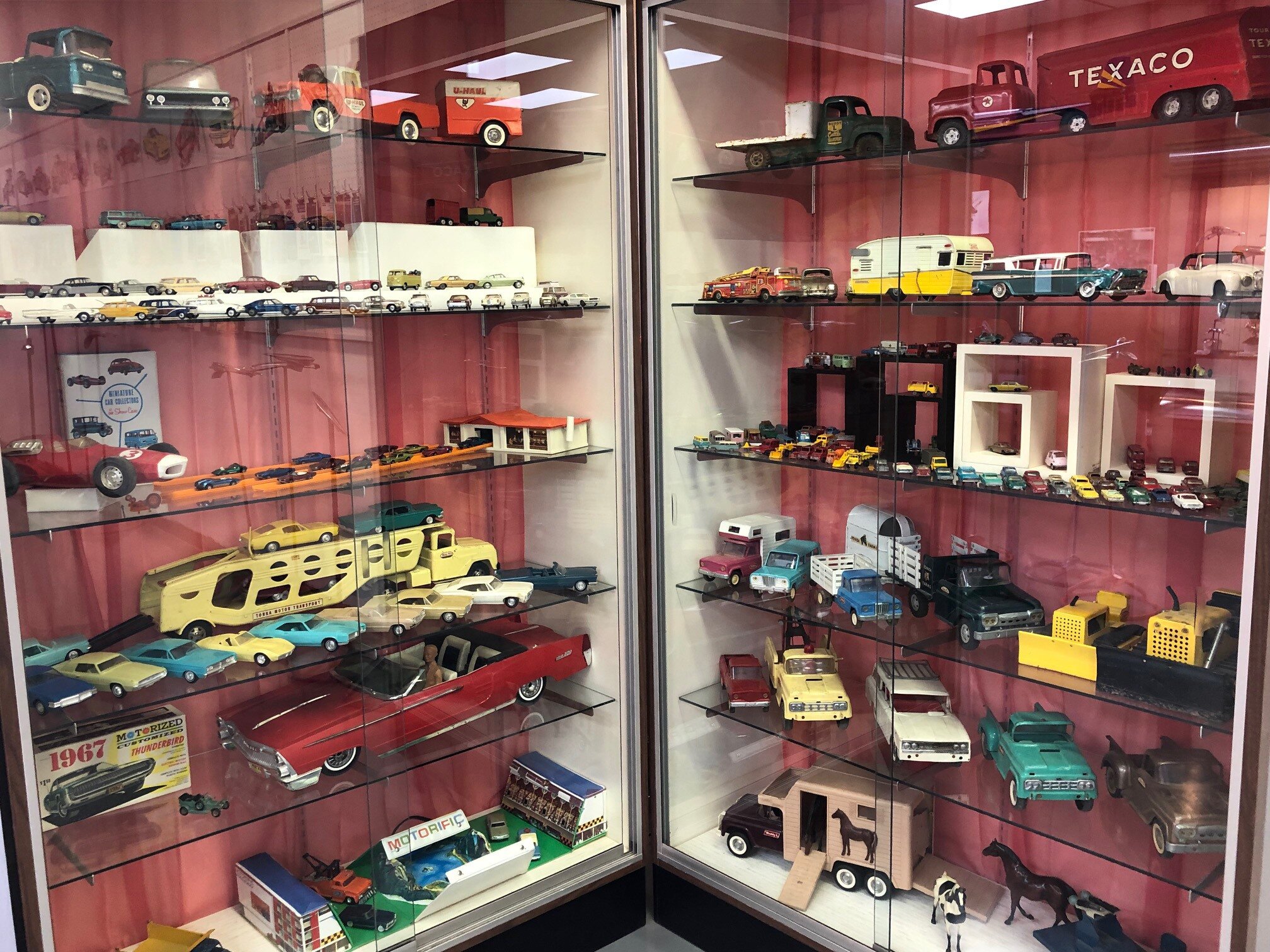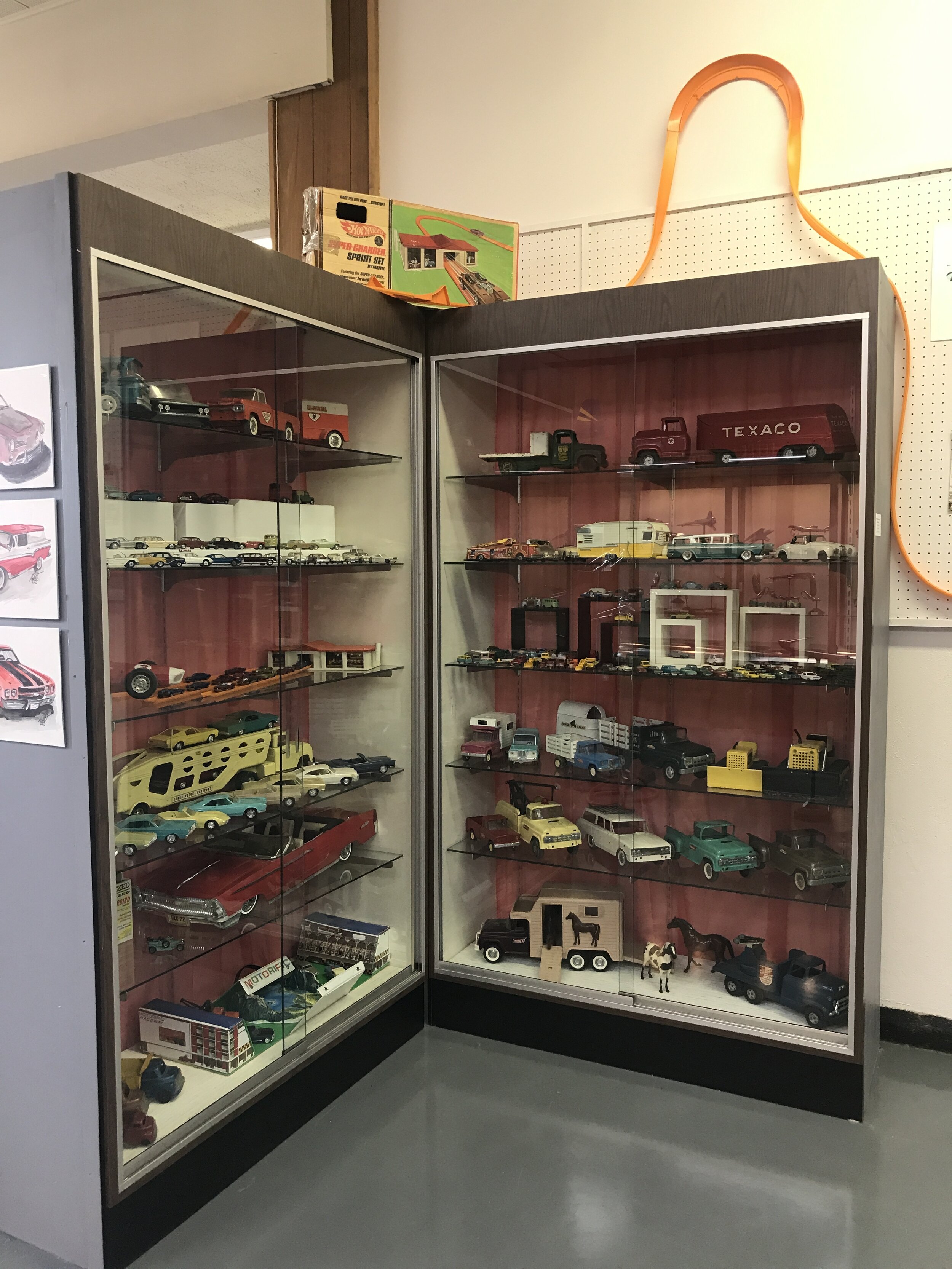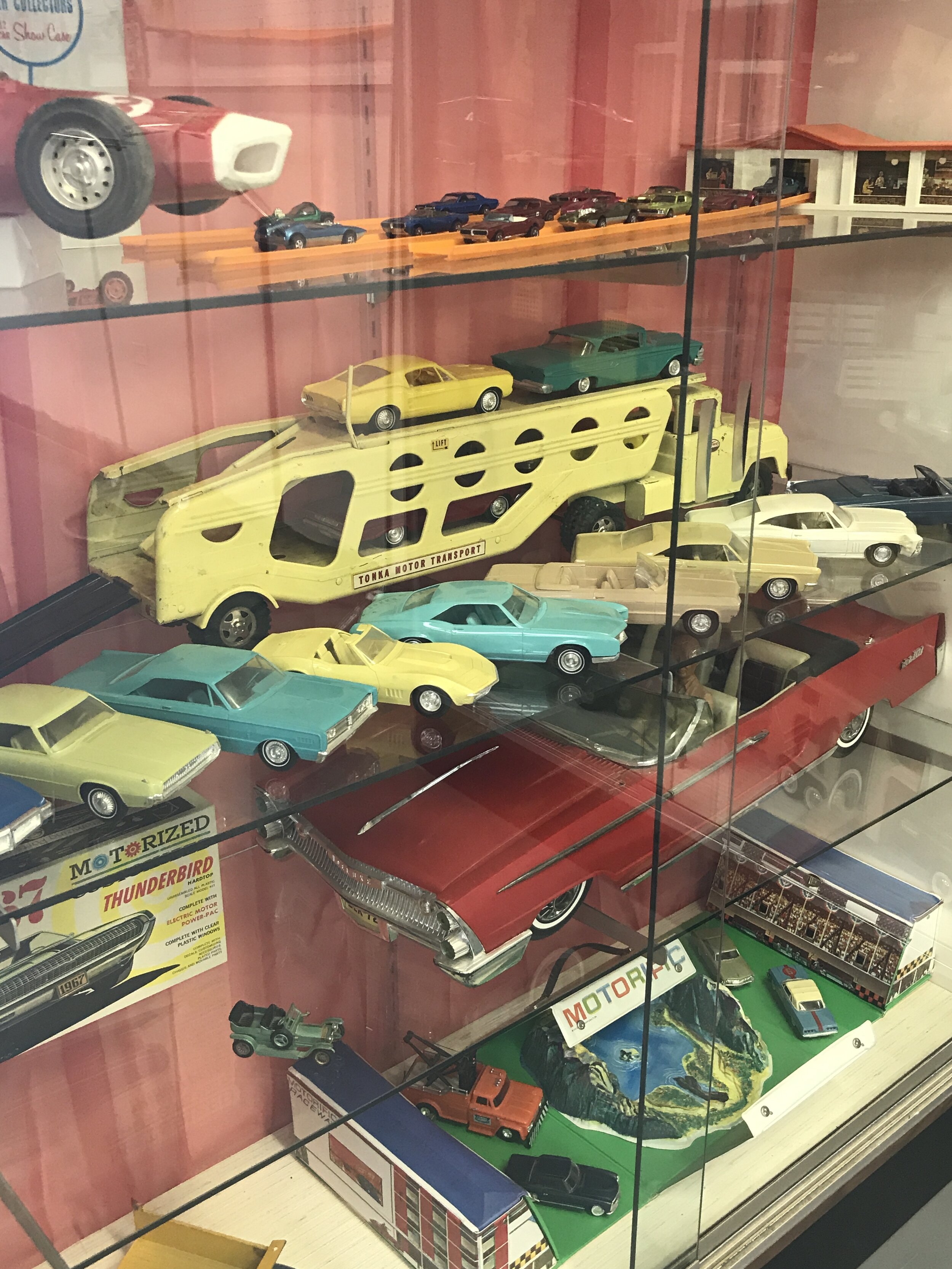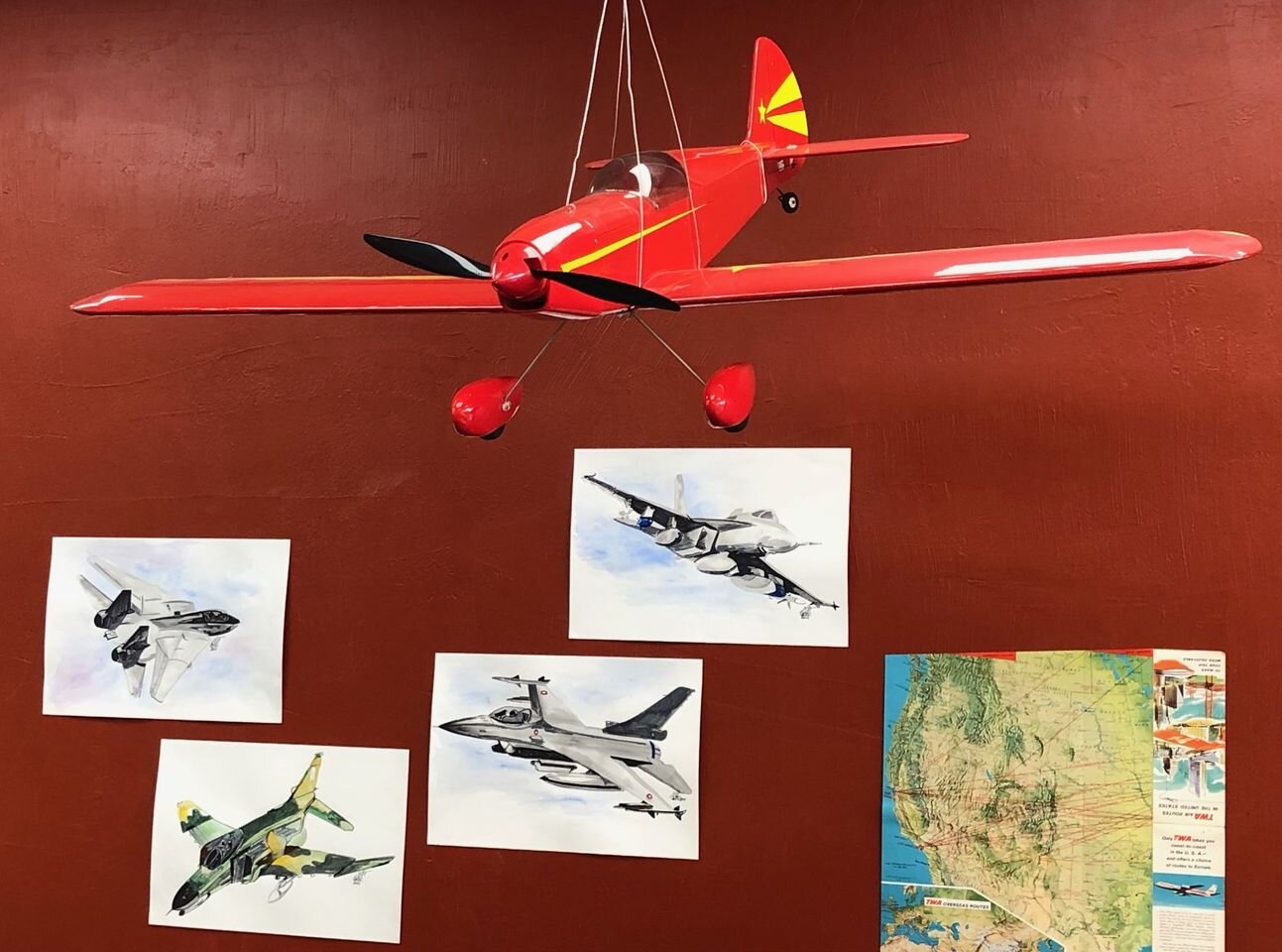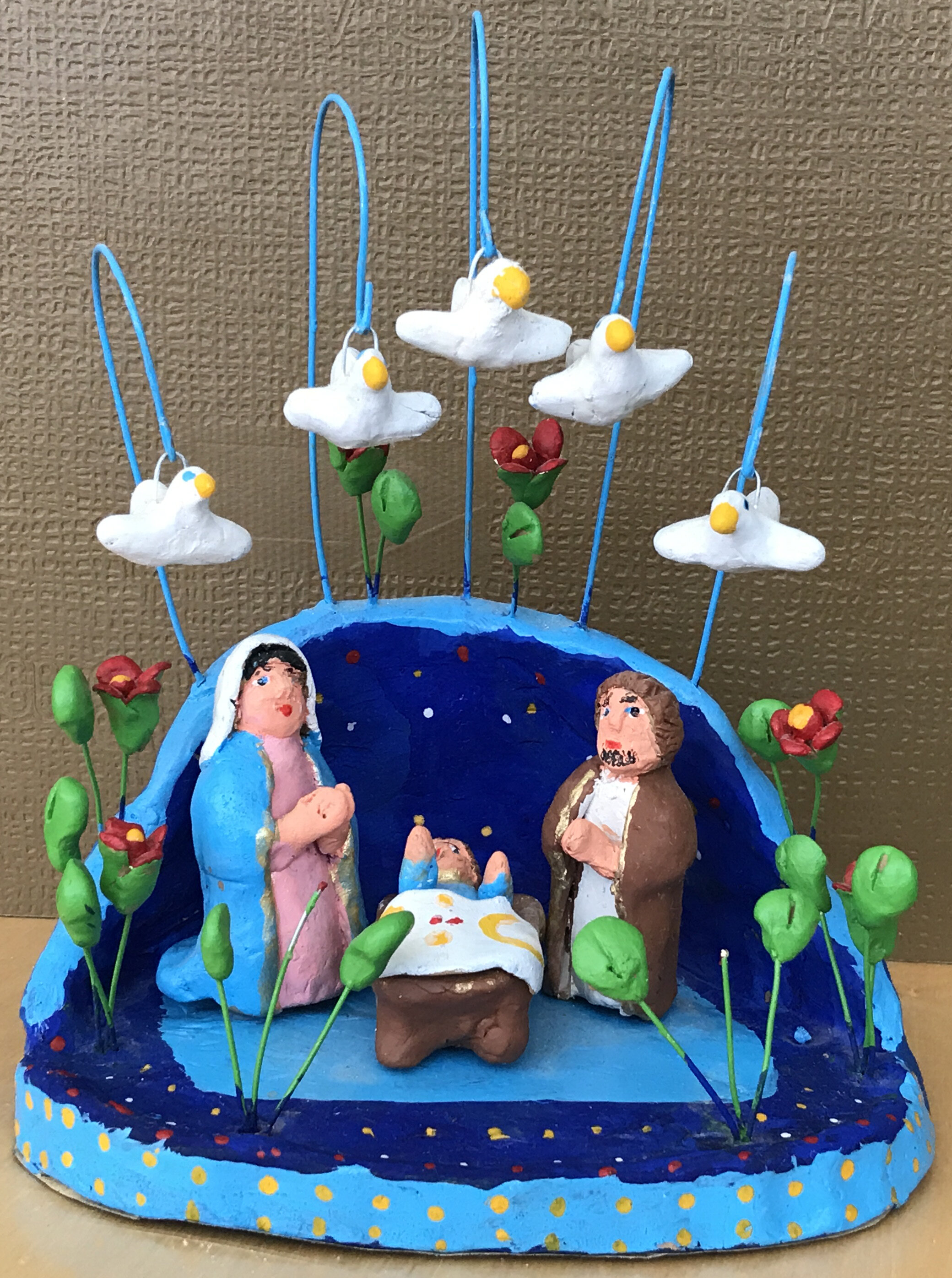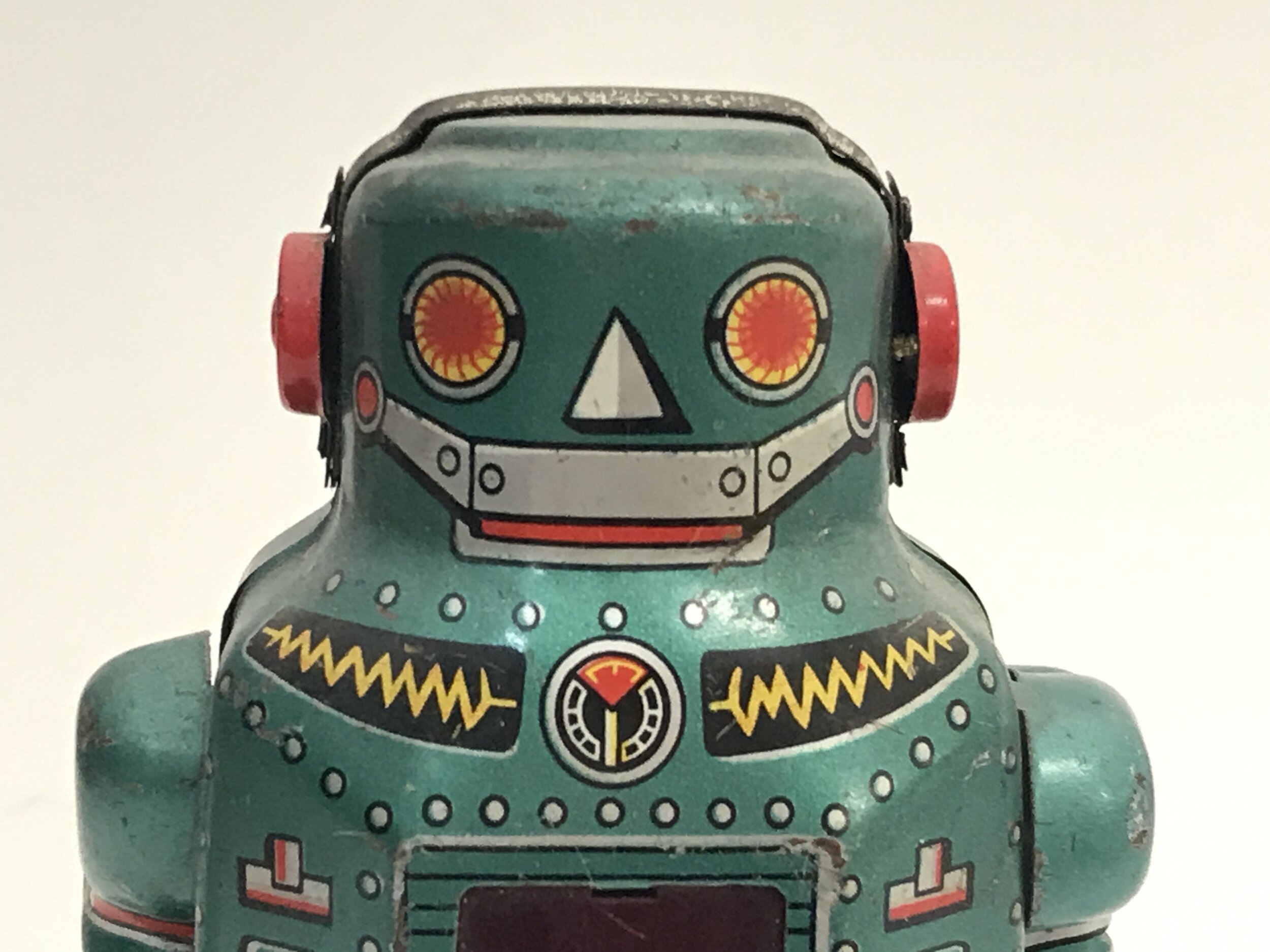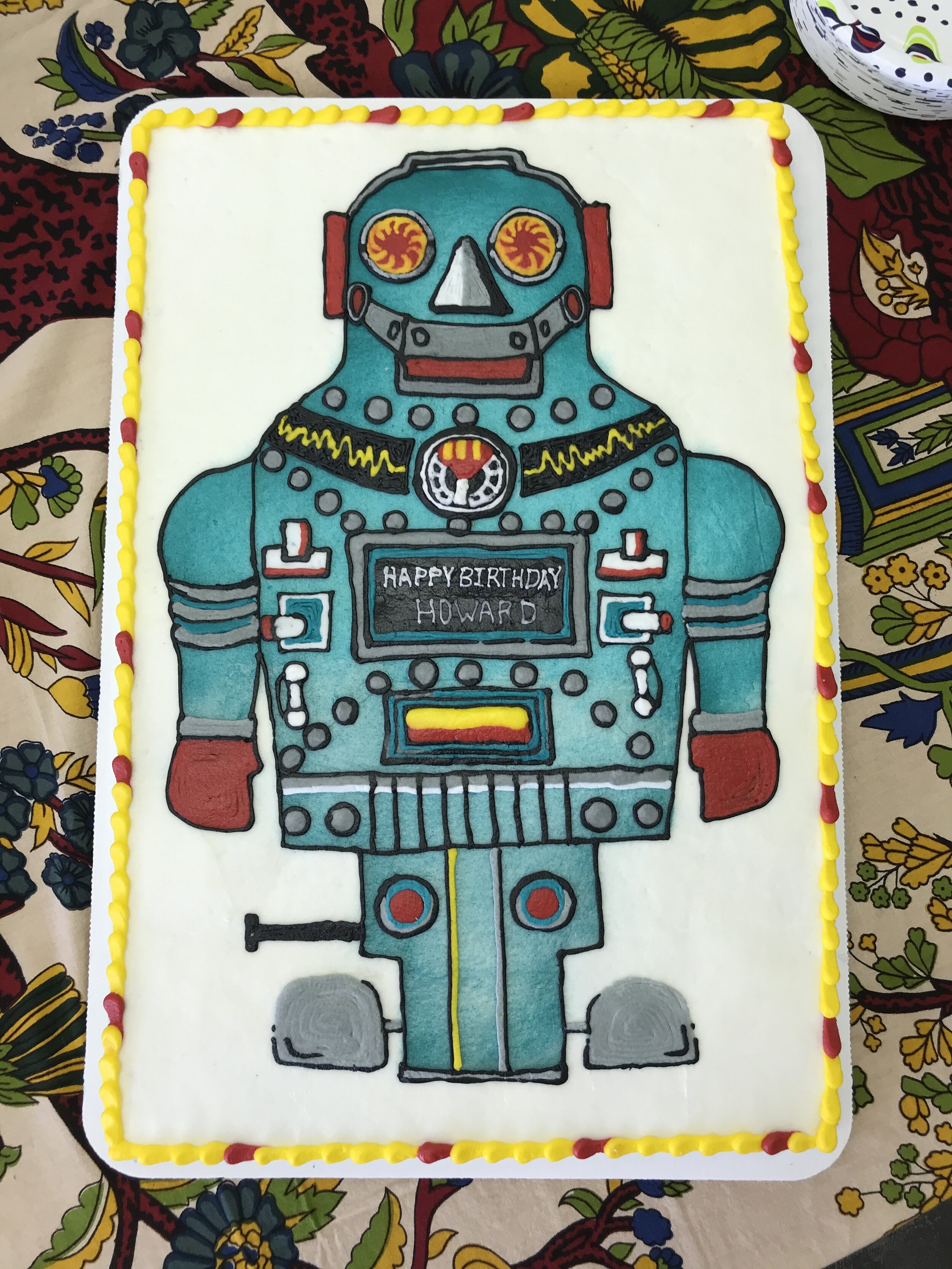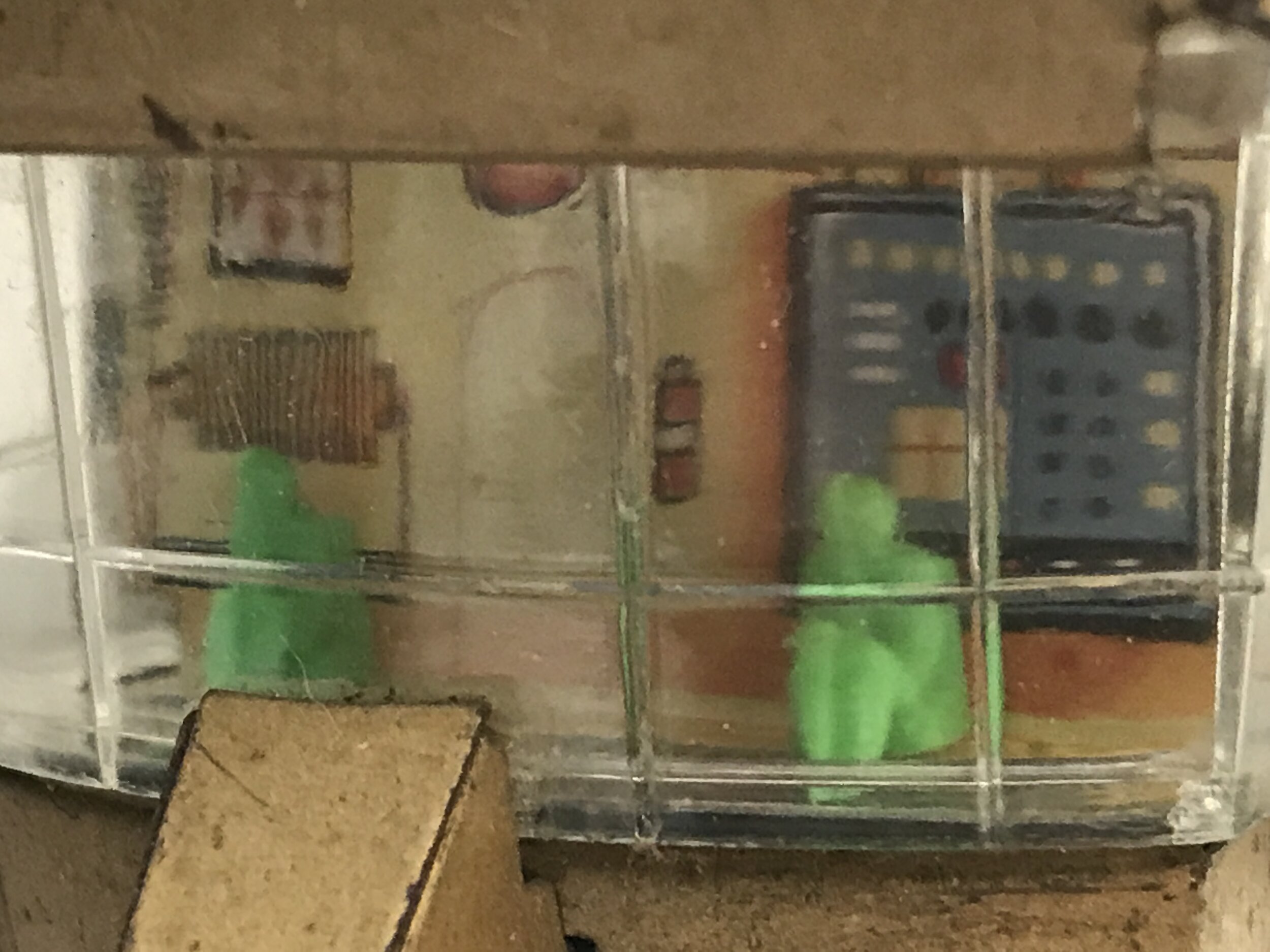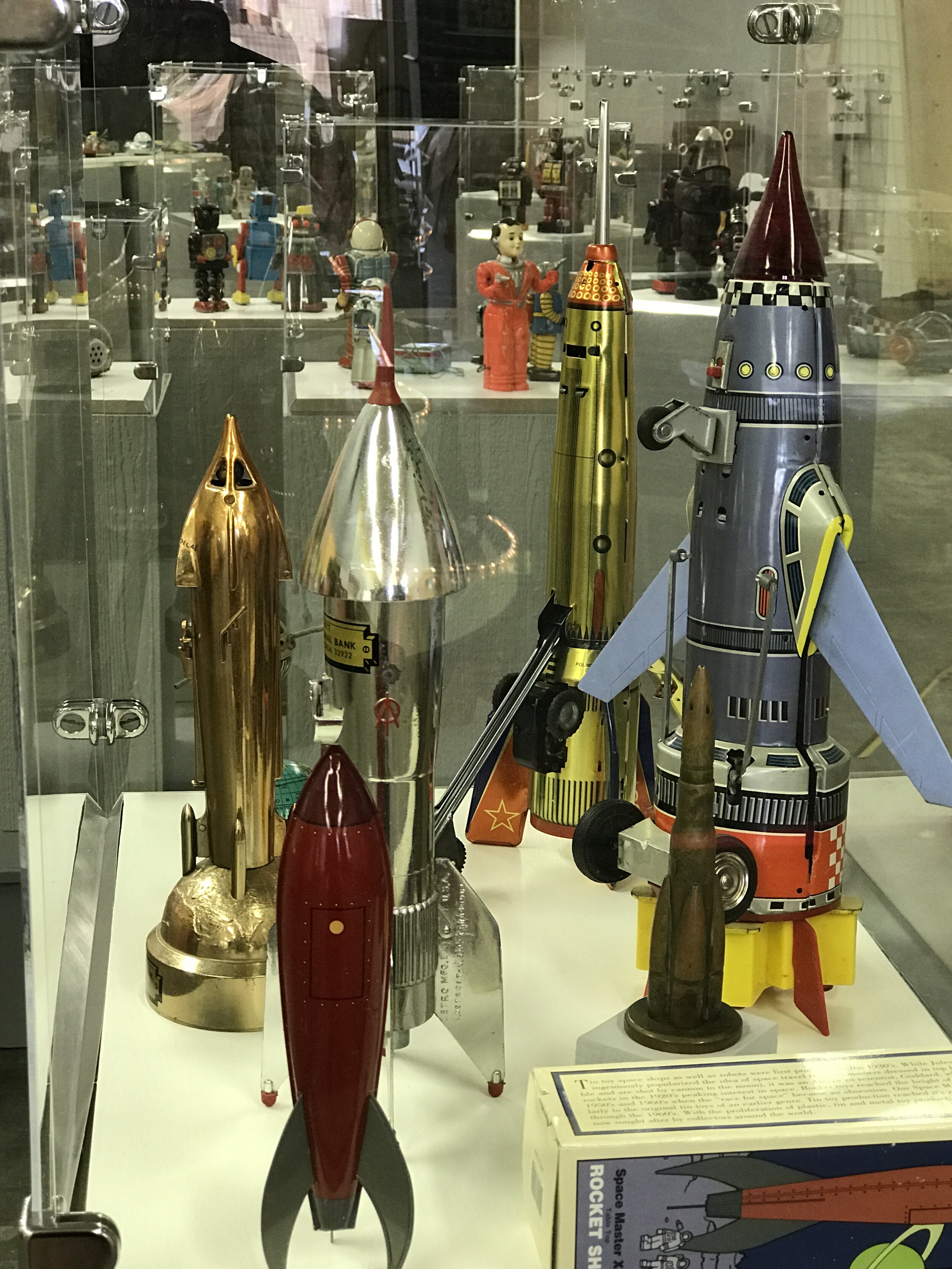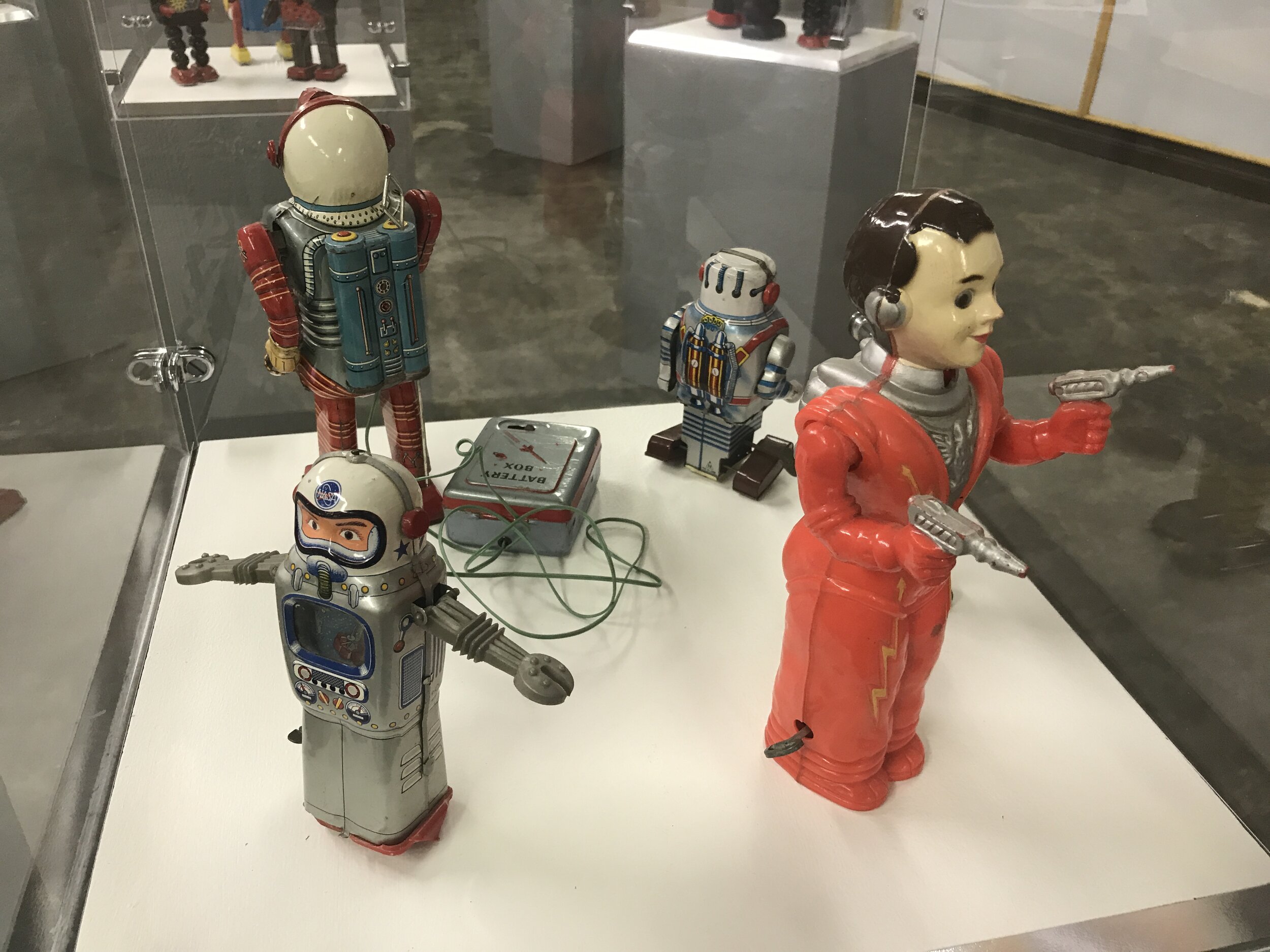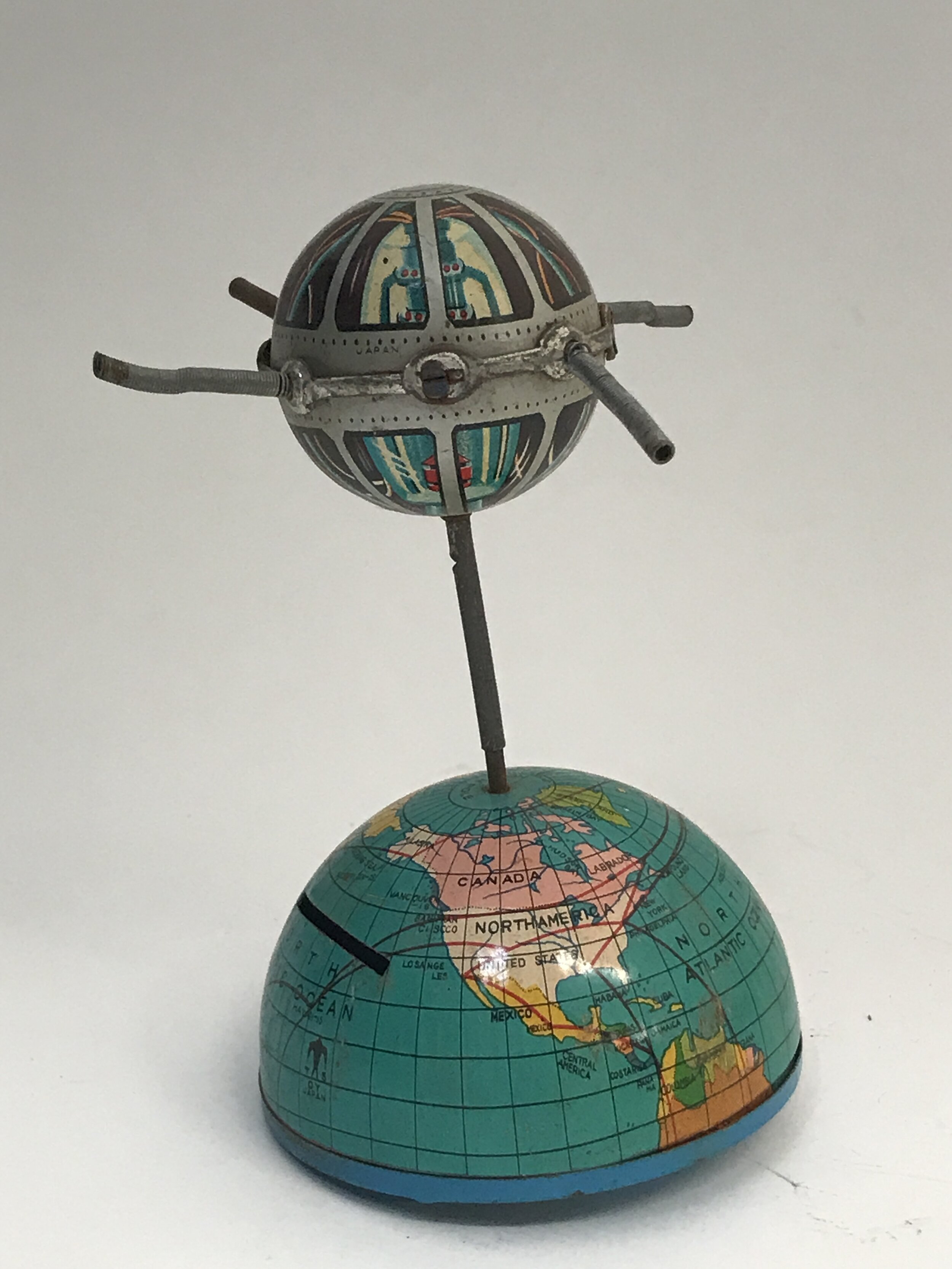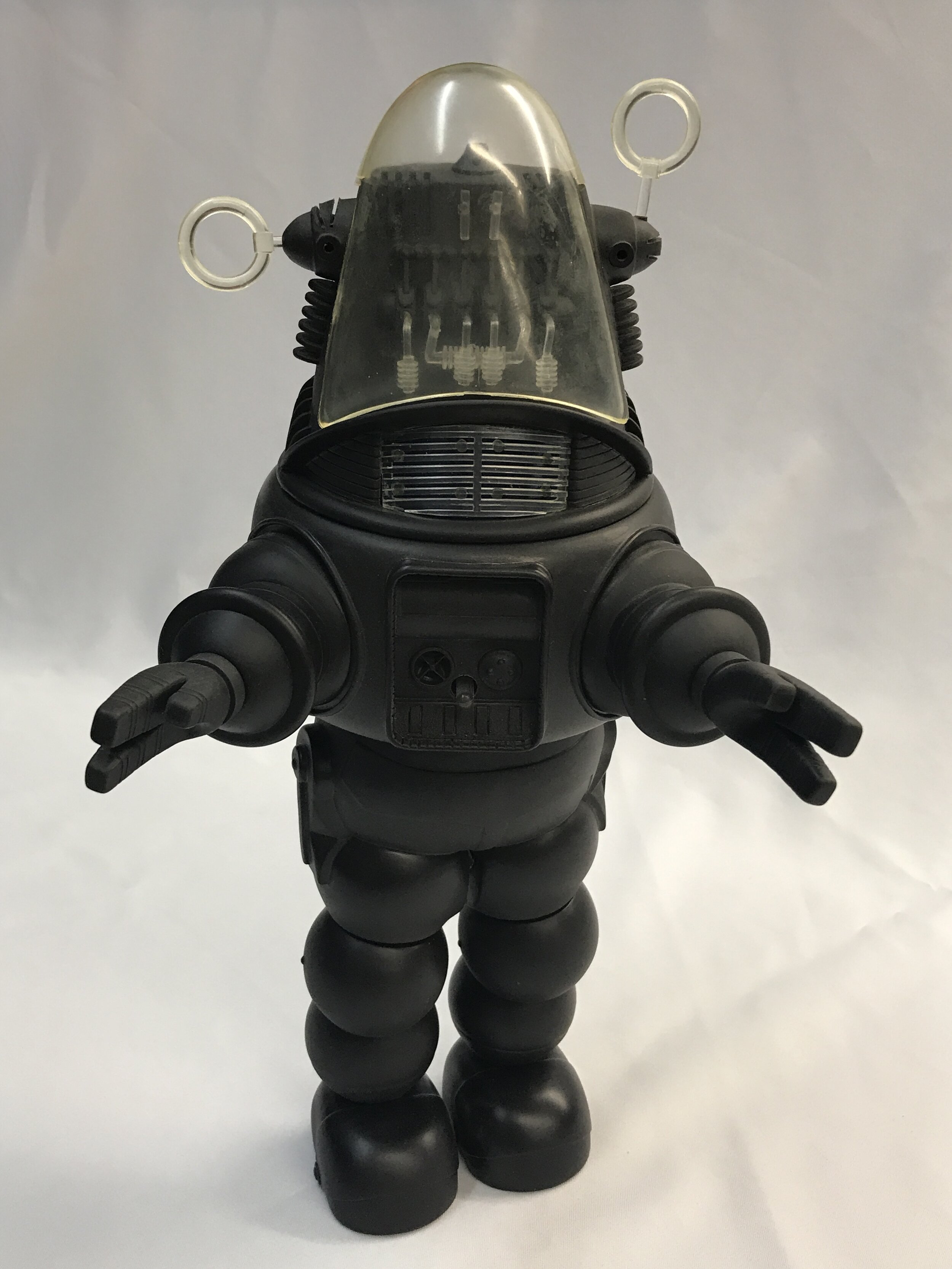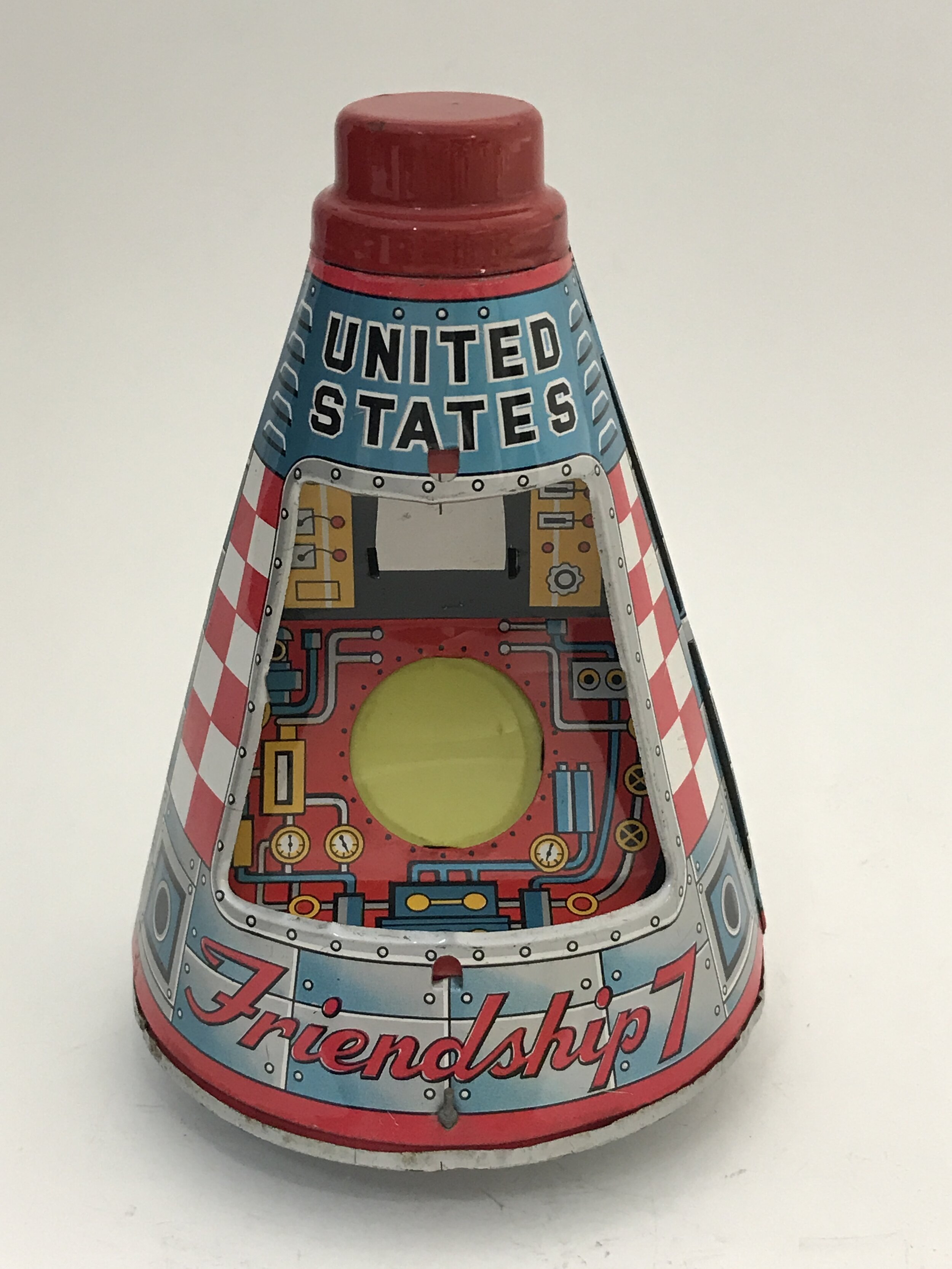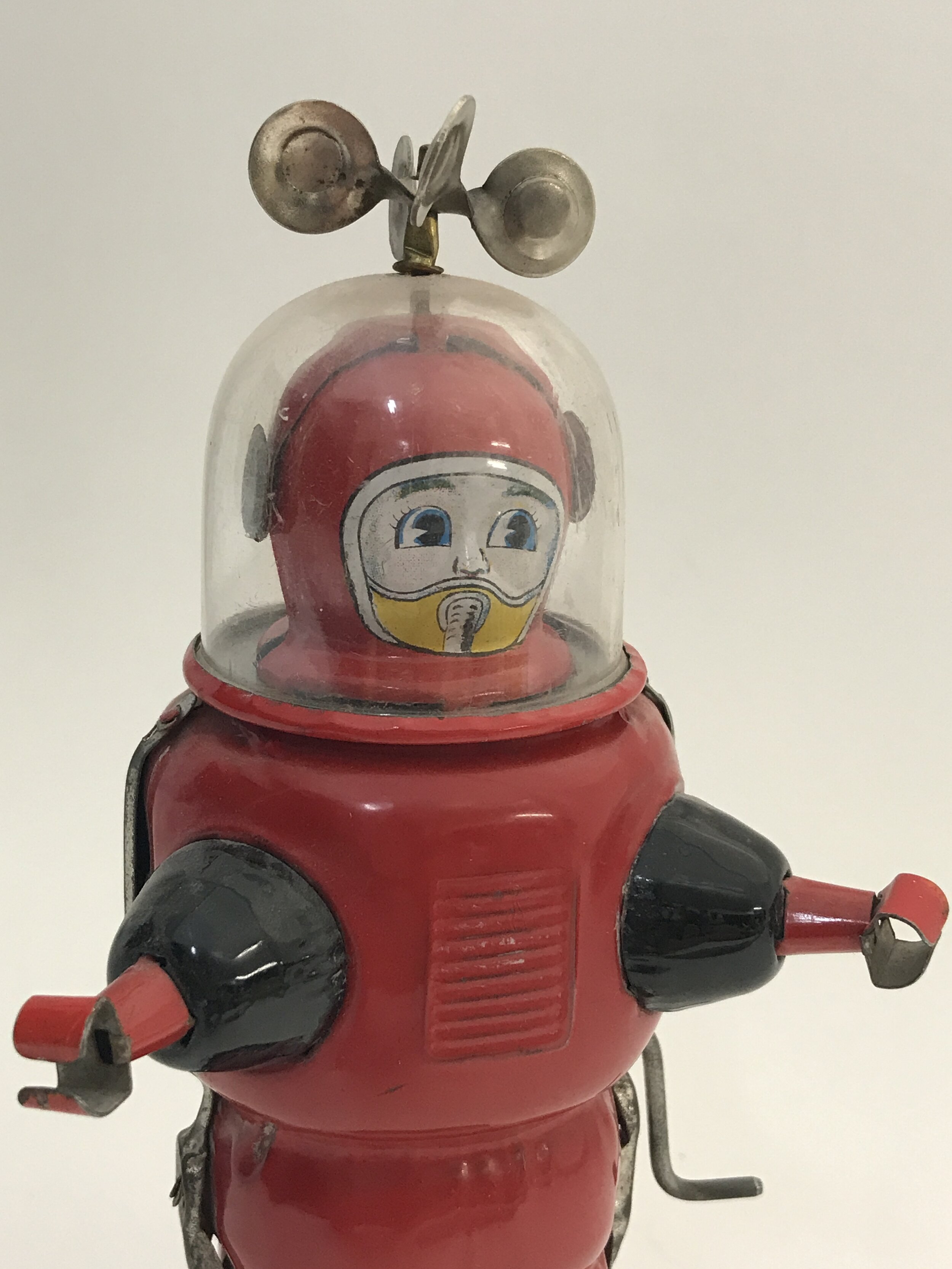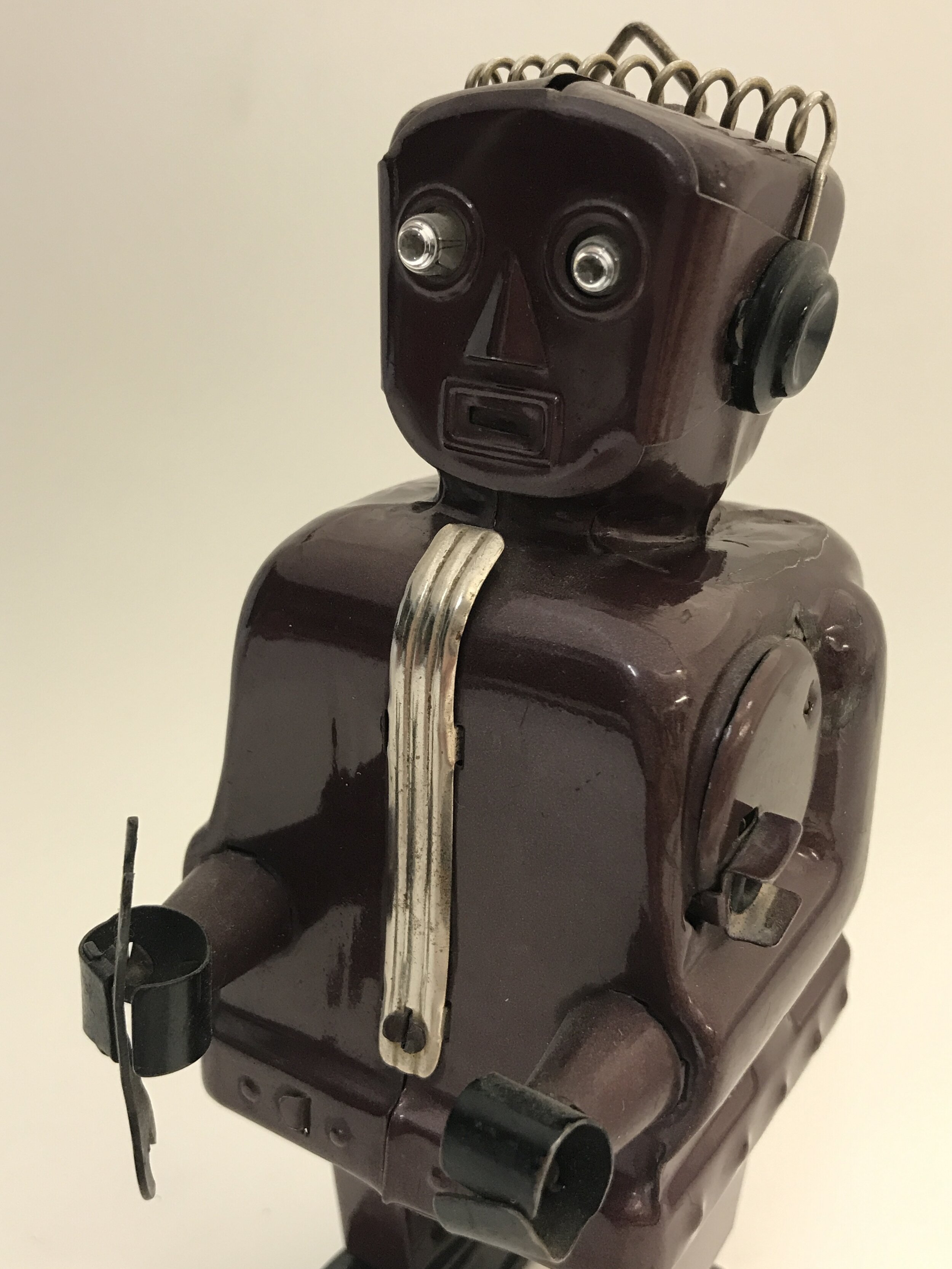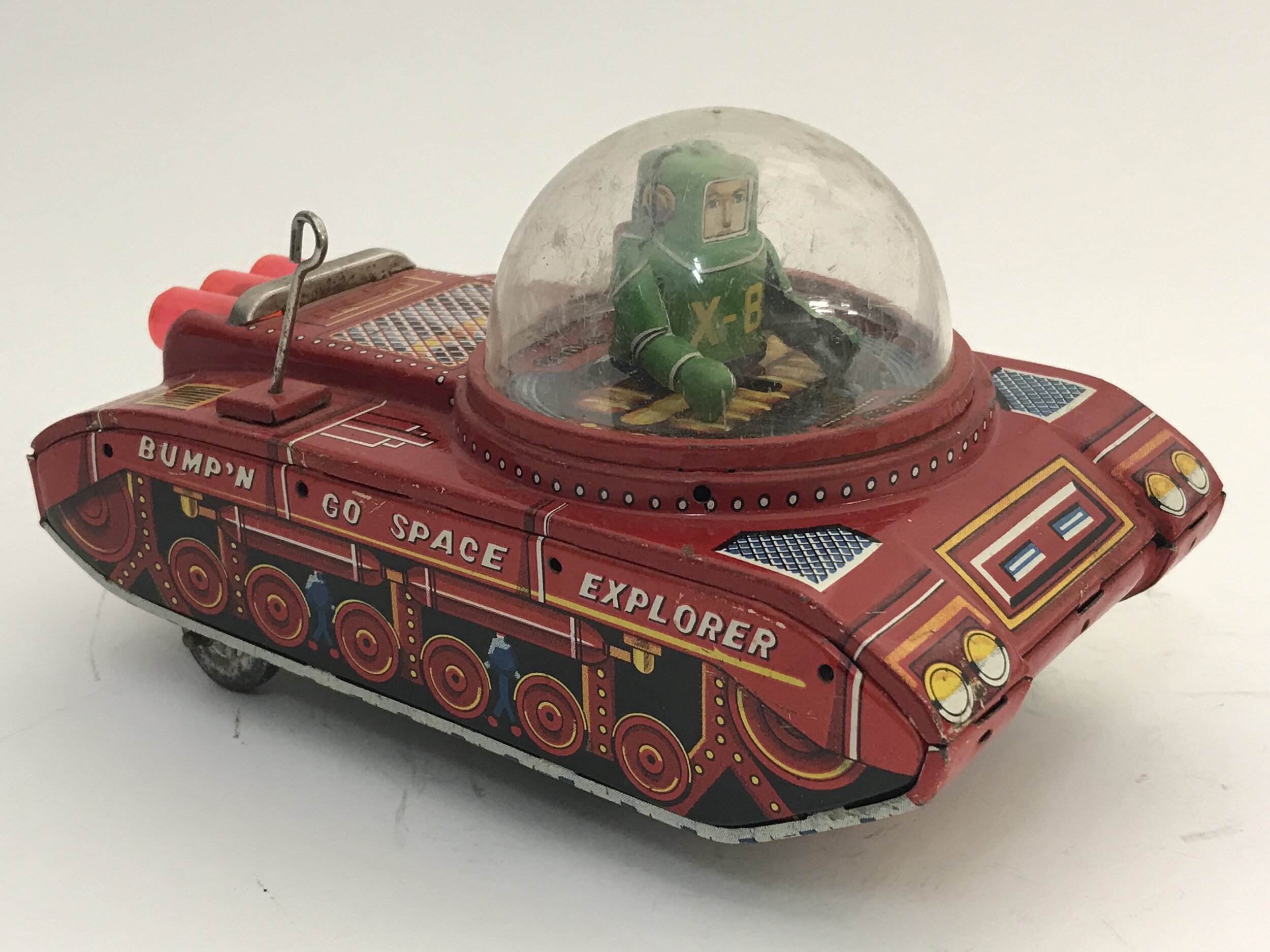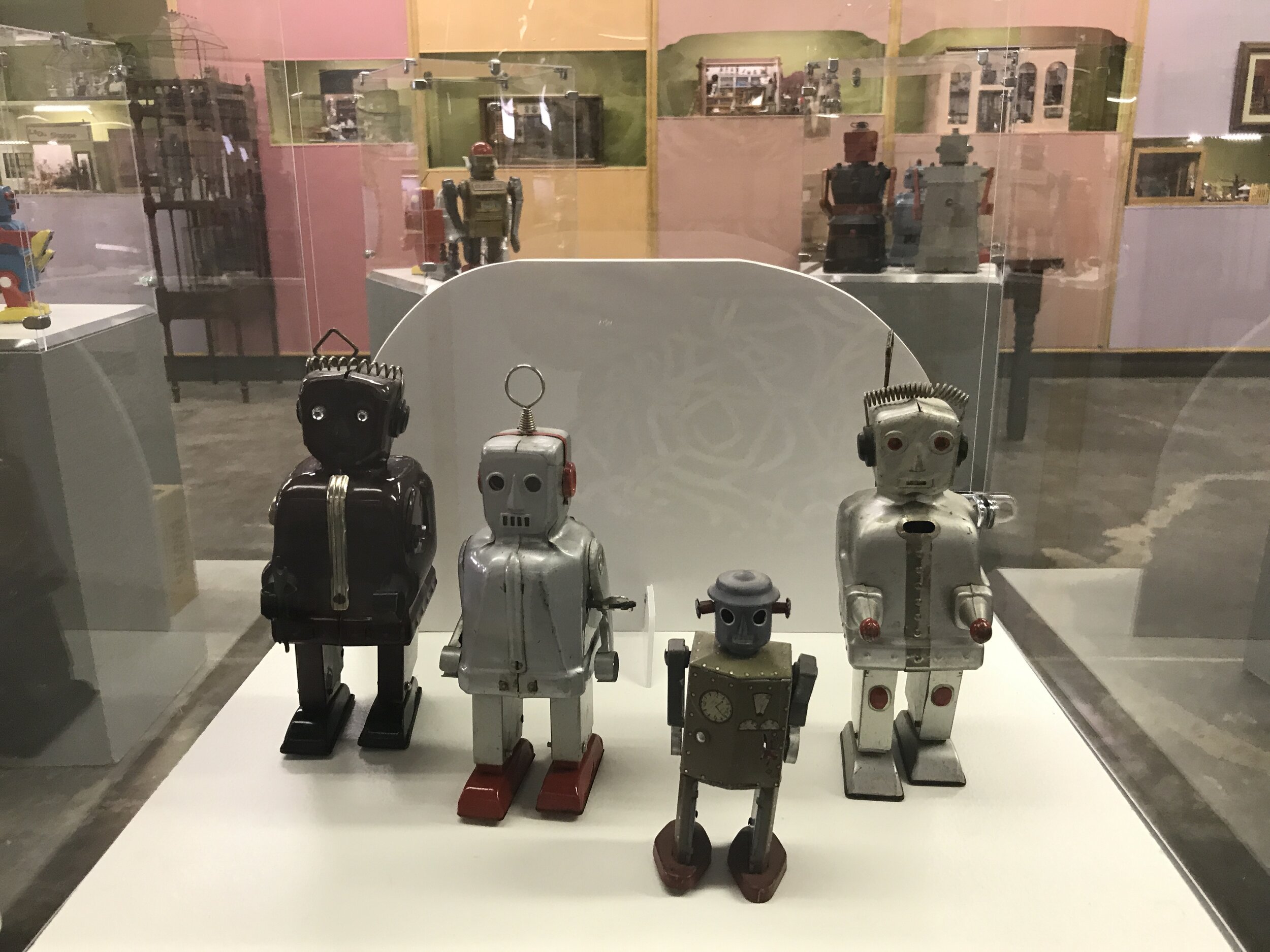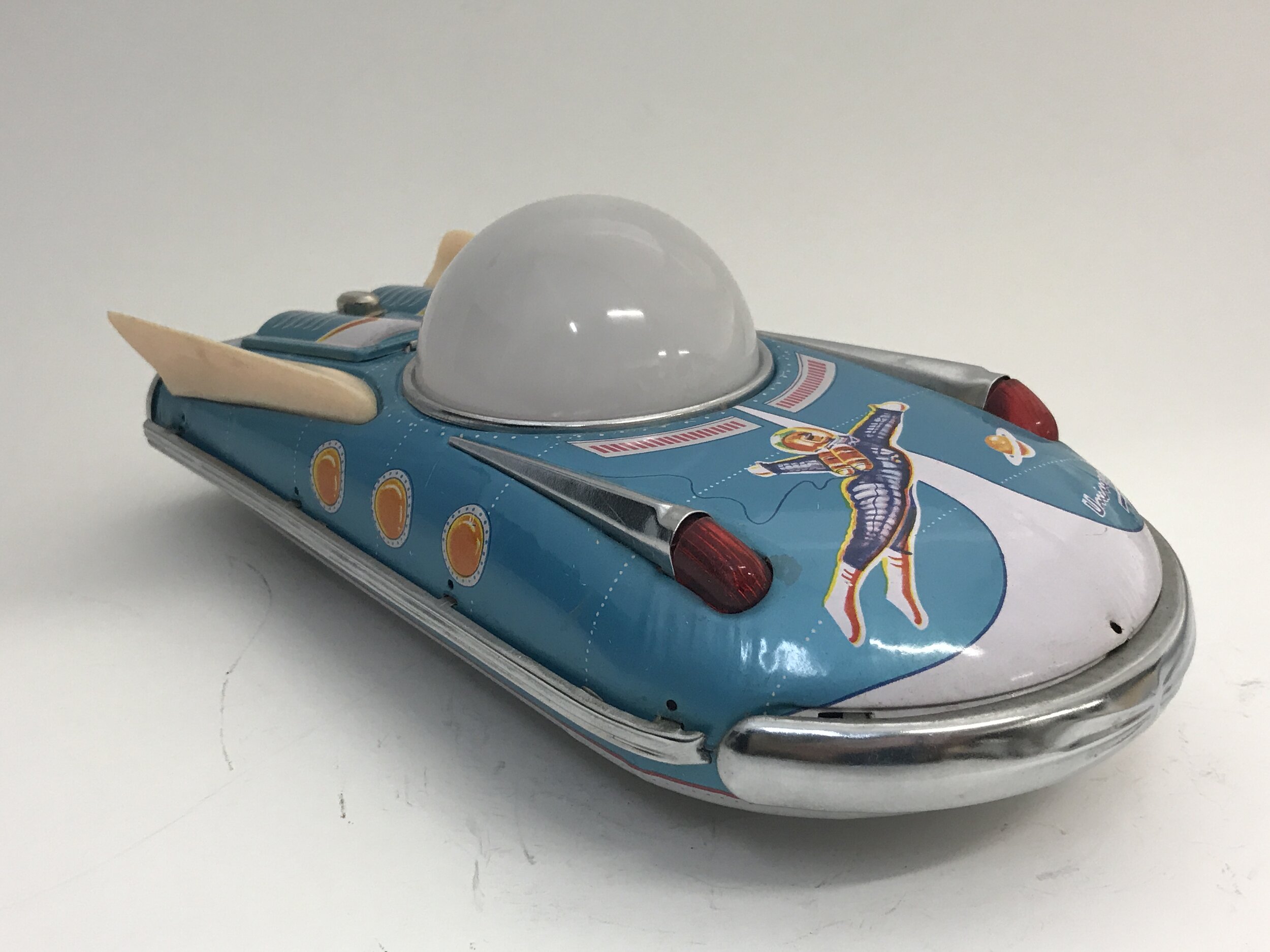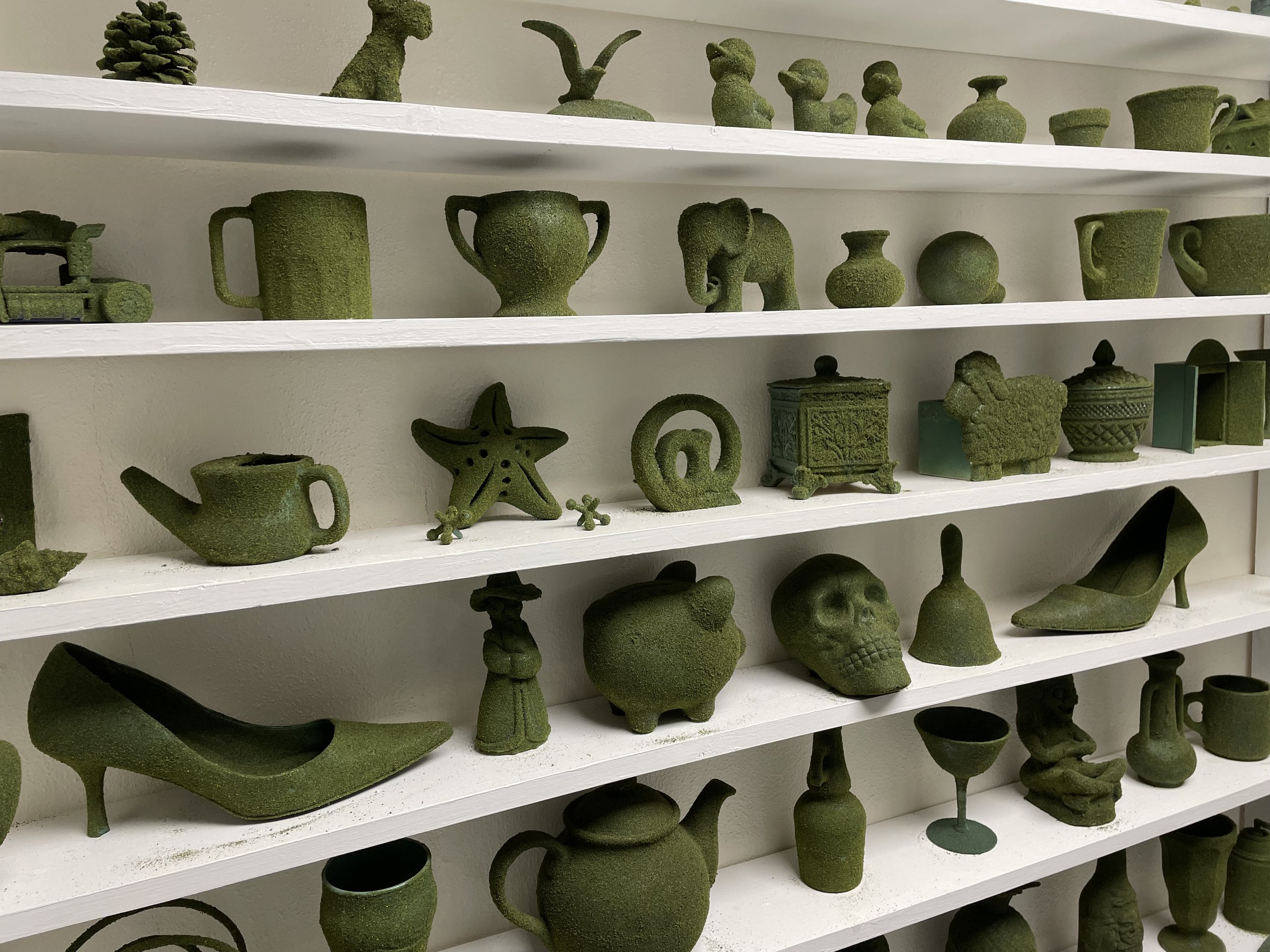NOW SHOWING!
Crock-a-doodle-doo, miniatures and collections from Pat Nichols Jacobs, Kansas City’s Alligator lady!
Thru June 7, 2025! Pictures coming!!!!!!!!!!!!! Stay tuned!!!!!!!!!!!!!!!
December, 2022 thru March, 2023
The Robert Ferrell Wells Legacy Collection
Hundreds of little buildings including a Hogwart’s Castle and Hobbiton Village, French J. Carlton/Dominique Gault miniature buildings recreating Paris, Alsace, Provence, London and Amsterdam street scenes with scaled miniature people, a large assemblage of Italian Giovanni Moro miniature buildings reconstructing Venice, Greek miniature buildings and sailboats; California Spanish mission, Oriental, Lithuanian buildings; and a very large array of hand-painted Danbury Mint, Lillliput Lane and David Winter collectible buildings, including reconstructions of some famous structures such as Edinburgh Castle, the Alcazar and Mont St.-Michel. Many thanks to the Wells Family for their special donation of this collection which can be shown in many permatations in the future!
December, 2021 thru September 15, 2022
See more than a thousand objects collected by retired Roswell therapist Susan Voigt. The toys, replicas, miniatures, etc., both natural and man-made, were used in her sand-tray therapy practice for 20 years. Her clients would create ‘worlds’ in either wet or dry sand, and based on what items they chose, how they played with those items, and what they said during their session informed Susan on how to best help. She retired in early 2021, but her objects did not! They were sorted, grouped and put on display at MCCM with Susan’s artistic assistance (particularly the nature-glass-gems display!).
Finders Keepers
March - December 2020
Featuring Hedda Saltz’s 42-year found penny collection; money origami by Juan Gonzales; box collections; David Blount’s antique metal banks collection; Peggy Bohlin’s novelty bank collection; piggy banks; found objects from Tim Johns and Tonee Harbert; art made with found objects by SV Randle, Sharbani das Gupta, and Helen Walters; art made with monopoly money; and a small display of foreign and interesting money. (Additional contributors: Brinkman Randle, Nancy Fleming, Susan Voigt, Sally Pretti, Jeremy Howe, Elaine Howe)
Hedda Saltz’s 42-year found penny collection!
PENNY PICKING AND SO MUCH MORE, by Ray Pawley, July 25, 2020
Although alley ways may have a mundane reputation, there is a sense of discovery exploring places less travelled. Starting about 45 years ago, Hedda Saltz of Arabela, NM, would explore alleyways to see a side of Chicago that was both interesting and overlooked.
She lived in a neighborhood that had old garages in alleys, some dating back to horse-and-buggy days, and a key was needed to unlock the door. Then, the door needed to be opened by pushing and lifting manually. Perhaps in that instant while pulling garage keys from pockets or purses, coins might fall to the ground unnoticed. Consequently, coins were often found in front of garage doors. Parking meters along business streets were also apt to yield coins. Just walking along sidewalks, Hedda would spot coins on the ground next to meters. By far, most of the coins found were pennies. Did Hedda purposely look for coins? “No. But,” she says, “if a coin was there it seemed to wink at me. I saw it.”
Why did Hedda keep them? Certainly not for their monetary value. The face value of the coins would rarely total more than a dollar after an accumulation spanning 6 months or a year. As Hedda puts it: “They were good luck and they were a nod from the Universe that I was just where I was supposed to be.” A discovery of a coin had, in a way, a reassuring effect.
“The discoveries at my feet were somehow unexpected, and always welcome.” declared Hedda. Besides an occasional battered coin, a bus token or torn piece of bill might beckon. Occasionally a Canadian coin would be found. Also, a coin might be found while travelling in a foreign country. A group of coins, a tight scattering may occur. Coins might be new and shiny or old and tarnished. Even play coins from a card game might be found. All would thereby find a new home with Hedda.
Times change. Now, when people are asked if they pick up pennies, often the answer is: “No”.
“Sometimes I would be walking with someone who knew I kept coins and they would spot a coin. If they offered it to me, saying: ‘Here, you take it.’ I always declined. After all, this was theirs, a good luck find of their own.”
The further one looks to the past the more precious pennies were. There are many sayings involving pennies: “A penny saved is a penny earned” is one example.
Were there revelations about abundance? “Yes. When I moved to Oak Park, Illinois, just outside of Chicago and got my first dog, Tula, we took endless alley walks. I found many coins and little trinkets that I kept. Those were bumper years. When I moved to New Mexico the numbers of coins I found dropped dramatically. Now that I live on a ranch I shop in malls in Roswell that have no coin meters. Nevertheless, from time to time there lay a nickel or penny near my car when I step out into the Walmart lot. There it was, waiting for me. OK!”
If there is a message Hedda has for others it is this: “You know it when you have a moment when the Universe is on your side. We all have those moments. Hold on to them.”
“From the beginning, I started putting the coins into a new box at the start of each year. The first coin I found each year would be put into a little baggie with the date and place where I found it. Thus, every coin, every find has its home and is kept with the specific box devoted to that particular year.
Many of my penny boxes are New Year’s gifts from my husband, Ray Pawley.
“Coins and found objects became souvenirs of my life, an affirmation of my path and a reminder that luck is possible.”
Dolls: A Curious Collection
December 2019 - March 2020
Antique dolls, pin dolls aka half dolls, dolls from around the world, handmade dolls, straw dolls, paper dolls, storybook dolls, and a commissioned cartoon by Christopher Baldwin.
From the collections of, and thanks to (alphabetically): Sara Armstrong, Patty Buckley, Margy Bourber, Margie Boles, Marifrank DaHarb, Susan Marie Dopp, Family of Wilma Fitzsimmons, Nancy Fleming, Margo Fullinwider, Susie Knadle Glass, Elaine Howe, Michelle Mayberry, Gretchen Phillips, Brinkman Randle, Maja Ruznic, Kathleen Sheffeld, LaVerne & Rex Smith Family, Luz Smith, Janell Wicht, and the Family of Sandra Wiggins.
Transportation ‘n TNT
June - October, 2019
Model Airplanes by Leif Erikson Anchor, hood ornament sculptures by Bill Wiggins; Jim Ball’s childhood toy cars; state driving maps from Sue Ann Carpenter and Jose Rivera; automobile and airplane illustrations by Lynn Cartwright Waide; car art from Jim Ball’s collection, and vintage and contemporary fireworks collected by Jeremy Howe.
“Domesti Collecti” – Collections and Art from Home and Refrigerator
April - June, 2019
Soaps, soap adverts, soap wood boxes and washboards from the collection of Cleis and Jerry Jordan, Lincoln, NM; Casey Carroll’s childhood tea sets; cups/saucers from the Howe Family ; Brinkman Randle’s collection of Rolling pins, white creamers and ceramic white ware; salt ‘n pepper shakers from Brinkman, Elaine, Nancy Fleming, Beth Rudolph, Ramona ______, Jessica Parham, Melinda Creamer; miscellaneous antique kitchen items from Susie Knadle Glass, Elaine, and Brinkman; paintings OF food (mostly found in thrift stores by Brinkman), and Paintings made USING food by Jeremy Howe.
Nativities from Around the World
December 2018-February 2019
Nativities from the collections of Brinkman Randle, Meryl Good, Marifrank DaHarb, Miriam Bertlshofer, Dan & Wendy Raes, Wanda Dent, and Linda Evans.
Unfortunately due to a server crash, the abundance of pictures taken of this show were lost. Most of the collection is still obtainable, however, and will be shown in a future year.
Louise Deroualle gave this Brazilian clay nativity to Brinkman for his collection in 2018.
RETROBOTS
July - October, 2018
A selection from the Howard Vasquez (Carlsbad, NM) collection of vintage space toys and robots.
This was definitely the BEST collection with which to launch the Curious Collections, particularly since the museum’s preview in 2018 was during the annual UFO Festival! Howard’s fabulous bots and ships were a joy to photograph, group, install, and show off! It turned out his birthday was the day of the preview, so Vicky Lovato made him a special robot cake of Howard’s first ‘collected’ robot toy: Mighty Mechanical Robot, Nomura, Japan, 5.25”h.
Here is Howard’s story (and more bot pictures at the bottom!):
It’s the late 1990s in Bethany Beach, Delaware (near Baltimore, MD). Howard Vasquez and his wife Beth have traveled from New Mexico to spend a restful vacation. It is there – in a junk store – where a one-armed vintage toy robot catches Howard’s eye. “How much?” he nonchalantly asks the salesman, hoping it doesn’t cost his arm and leg. “$10.” Howard calmly removes the bill from his wallet as he tries not to reveal his ‘that’s a good deal’ smile. An obsession is born.
Jump in time to 2018. Howard’s collection of robot toys has topped 200. He has found bots from Japan, Germany, Russia, Romania, Korea and the U.S., and it doesn’t look like he’s finished yet. He frequents area second-hand stores and yard sales, and searches the world wide web where he of course has found he is not alone on his quest for retrobots! It’s a small group of enthusiasts, definitely not on the same scale as Star War memorabilia fanatics, and Howard says it seems physicists are prone to catching the bot bug.
Howard graduated from New Mexico State University in 1979 with a major in history, so it’s not surprising Howard enjoys researching his bot collection. He says the “Golden Era” of robot and space toys is the era after World War 2, particularly in Japan. From found metal, including coffee cans left behind by American G.I.’s, a cottage industry of toy-making was created. Different families would make different parts of a toy, and then it would be assembled elsewhere. “Some of the toys would go through 150 steps,” Howard marveled, “particularly because of their intricate wind-up or friction action parts.” Other Japanese companies started out making toys, then became the huge electronic companies of today. But it’s hard to beat the pad printing, hand painting or lithography processes of yesteryear.
The oldest robot toy in Howard’s collection is from the late ‘40s, but he also owns a reproduction of a toy made in the 1930’s. The early bots are made of tin or metal, but by the 1960’s the robot and space toys were battery operated and using plastics. The space race and television shows like the Jetsons (1962) helped widen the assortment of available toys, and, being the era of the baby boomers (1946-1964) there were loads of children wanting those toys. In fact, Howard remembers having a Moon Explorer robot as a kid, and was excited to find one as an adult for his collection.
Most of Howard’s retrobots are not pristine, or in “mint condition”. He doesn’t mind a missing part or a little rust. It adds to their character, their unknown history of past owners and past travels. He can’t resist giving them a wind up or two when he first acquires a new toy, but mostly it’s not about what they “do” that makes Howard admire them. It’s their personality, sometimes their ‘homemade’ quality, the imagination of the designer(s), and the innocence of a time before our ultra modern technology to predict that future.
Incidentally, Howard has bought robots on eBay or on-line for his collection, including finding the right arm of the original one-armed bot found in Bethany!
MCCM is proud to be the first public venue to showcase Howard’s robot and space toy collection, and we give due to Jacob Roebuck for dubbing it RETROBOTS.
Nancy Phillips of Roswell also shared her collection of bots, toys, and ornaments - usually hung up or set out at her house during Christmas - for the RETROBOT exhibit! Nancy’s collection included the little red robot ornament (hanging fourth from left on top shelf) which is a red-colored reproduction of the oldest toy robot in Howard’s collection!
Atomic Robot, 5.25”h, Japan, wind-up, late 1940s
2021 - Green Green Grass of Home, a collection of grass flocked objects by Brinkman Randle and Nancy Fleming
2021 - Hats Off, a collection of hats from Sue Ann Carpenter, some originally from Helen Cusak of Roswell Little Theater fame, Brinkman Randle, Jim Green, and more!
